|
This may seem like a grim topic, but straight razors have been incredibly useful to me for decades of studio practice, and I felt inspired to celebrate them for a moment here with you.
These razors are super cheap, super sharp, and very dangerous. I wouldn't want to shave anything on my body with one! They have one dull edge and one sharp. Technically, it’s a collection of objects, but a very specific kind of utile presence in my studio nevertheless. I use these razors all the time for:
Essentially, any kind of precision work to cut, open, scrape, or sever - and I am seeking one of these 'flat sharps'. This makes the studio not a great space for toddlers or bare feet or curious kids because usually, there's one somewhere on the floor, and I am happy to have it that way because then it's fairly easy to find one! This is the prerogative of an artist, a great freedom, and a small hazard. I keep the old ones along with the new because they still work and also because disposing of them properly is tricky. Most of them live in the box they came in, which amazingly costs like $4 or something, and they generally do the job of a pair of scissors without the extra handle parts or the two-blade aspect. It's a direct, sharp cut, and I find that incredibly useful. Are there small, powerful, easy to overlook items around you that are worth celebrating too? Please share here if you discover one. Also, I have a razor related tip for you: Please don't ever dispose of a razor by throwing it directly into the trash. This may be obvious but if not, it's so that the powerful sharp edge doesn't tear through all manner of garbage and the bag itself, or the handler of said bag. Instead, put it into a box and tape that box closed, or tape it to a piece of cardboard, completely covering the blade edges. Or, suspend it in a folded piece of tape wider than the blade in all directions, so that it's held in place, like it's in a the middle of a sticky folder. Ideally, this goes into something else like a box because the tape still might bend and tear, re-exposing the blade. OK! on to less cold, hard and sharp topics!!
0 Comments
In your creative or professional work, do you have rhythms to the seasons, your activities, where the focus goes?
Every season, I move things around in the studio. This is a practical change, so that I can get at the wood stove, or use the space around it when it's not in use. Like any rearrangement of furniture, it moves energy and opens things up. It's an excuse to tidy, clean and organize, and it brings in the sense of the upcoming season, from the few I've spent here so far. In the spring, I move the tables against the central wood stove area, and gain some wall space. In the fall, the stove is opened up, and becomes the central focus of the whole place. I have also begun a major cleanout in the fall: of the stove interior, a big sooty vacuum job, so that I can use the interior space to its fullest when it's not so nice outside. I've noticed other rhythms of the seasons in the studio also: in the winter I tend to do a lot of reflecting, and a fair amount of work in abstraction in painting and on paper. I work on the pours, and I would say I'm at my most 'internal'. In the fall, for the last few years I've been working on abstract landscape: using the warmer months to work in oils with more airflow is the idea, and focusing on abstract landscape. The summer and fall are more extrovert times of traveling and being with others at art book fairs and open houses. Depending on the year and the timing, there are focused periods for exhibition prep. I also work out the calendar for printing mid to end of summer. Big conceptual ideas come in somewhat demanding, concentrated times, with long fallow periods in between. For my books, there's been a flurry of initial idea development, and then the project returns to back burner mode when I find some aspect I can't work my way around — or I do, but just really, glacially slowly. The stuff of the studio moves around as the focus and activity changes, and I’m slowly learning that one focus at a time is the only sane way to go. Do you have small object hero friends in your life? What are they? How are they important, how do you team up with them, and how do you express your appreciation to them? I'm going to digress now into the animate realm of helper objects for a moment. I, like some of Japanese culture, experience objects as having spirit, or an alive quality to them. I especially find this to be true with objects that are there as helpers or tools. It's quite easy to note this with certain items that are shaped like an animal or person. Not all of these objects live in my studio, which is why this is a digression, but they are in regular use, and they are very much a pleasure to have in rotation. Below is a short list of my favorites: 1. Helper Crane scissors: Helper Crane is a pair of scissors given to me by artist Juliann Cydylo about 25 years ago. They are sharp, and very useful when I'm ripping a seam or snipping thread. Helper crane is female, and she is really good at her job; we make a great team. 2. Reading Mouse: Reading Mouse is made of soft sueded leather and heavy heavy sand. Reading Mouse holds open the page of any book that I'm reading, usually at the table where we eat. She lives on the table, by the salt, and has gotten a little wax on her tail from the candle. This is how she does it. We've been together for many years. I don't remember when she first came to me. I am careful to thank her for her service, and she likes being useful. 3. Pen Holder.: Pen Holder comes to art book fairs with me. Pen Holder likes to be useful in holding a pencil or a pen, so that it's ready when it's time for someone to write their information down; he also, much to his chagrin, is a conversation starter. He does live in the studio on the table by the door, although occasionally he goes into a plastic storage bin with other tabling items. In general, he seems put upon by the role he plays, but secretly he is proud. I found pen holder about fifteen years ago, and he's always held something in my studio. I met him long before I met my partner Guy, but they bear a striking resemblance when Guy is tired, or is kind of fed up with something. I find that interesting as pen holder came into my life long before Guy did: a little portent. 4. Gas station hand dryer: This is not an object I own, but one I memorably encountered. We were driving home from the Western side of Michigan in a snowstorm from a midwinter funeral. It was miserable whiteout conditions. We crawled along small roads with very low visibility to get home, stopping at a rural gas station at one point, the kind where the bathroom is around the outside. In that dark, cinderblock, very cold bathroom, I washed my hands and then encountered a small, old fashioned, bright yellow, electric wall hand dryer. It was very loud, and dried my hands really well, and while doing so I had the feeling of its bright presence, doing this small heroic act in the middle of a blisteringly cold, day, of warming and drying the water off of my hands and then standing by for the next person with wet, clean hands in need of warming and drying.
Do you have small object hero friends in your life? What are they? How are they important, how do you team up with them, and how do you express your appreciation to them? All of these chairs have been found in people's trash piles in Boston. Sometimes, you find a treasure on the curb, and then it’s great to have a hatchback. I can’t imagine why, but occasionally these lovely chairs are abandoned, perhaps by a tired landlord or family member oblivious or too overwhelmed to think of an alternative to curbside abandonment.
Because Guy likes a higher, straight backed chair without arms, they don't live in the house. They are a thinking spot for me solo, and the place I often sit with someone else when there are visitors. At one point I refurbed them both, putting new woven chair tape (or whatever you call it) underneath and sewing covers for new foam. Yes, it was a pain in the butt, but now I get to enjoy them. In the winter, they sit in front of the fire mostly, and in the summer, they spread about to different areas that I find too cold at other times. Truthfully, they're not that comfortable, but they do look great and they remind me of fun trash finding days. I prop myself up with a lot of smaller pillows at the small of my back and often start the day ruminating in one of them: journaling, writing, working out the days focus or trying to remember what I was up to last time I was in here. I like that they're low, so that I can sit eye to door with the stove, and that they're soft so that I can relax and assume a receptive, easy position that's more about being than doing. I used to have this huge foam block in my art studio, just long enough to nap upon, and though it took up a lot of space, it was helpful to have that soft space in the middle of the industry of the studio. Softness is an important side of making, letting things land, receiving insight, gentling into the next clear movement. My chairs keep that invitation open for me and delineate space for the occasional guest. As a professional artist, you are running a business, and you end up being a tiny, round-the-clock capitalist, but in direct relationship or adjacent to the communities who read and consume what you make.
After some confusion, I realized that I had a good mentor and a reasonably clear path forward, and I sallied forth with my first crowdfund having no clue what I was doing! Now, I have a different understanding of why I both value self publishing and choose it, and I will share that with you here. By self publishing, what I mean is: I print the book through and with my own means, and I sell the book myself through a variety of non-traditional channels. One of my favorite ‘means’ as an artist who has made her own books, is the art book fair. This kind of venue is unique and distinct from others, in that it is creatives and their books or book-like things, showing up in a public way, to share, sell, and talk about what they’ve brought into print. What is absent in this kind of exchange is the large institutional gatekeepers of the publishing world. No one from Barnes and Noble or Amazon is going to show up, and you are operating outside of that machinery. When I have been published through Simon & Schuster’s Tiller Press (in 2021) I negotiated a very complex contract and paid for someone’s help with that, was given a small advance, and in exchange gave them my content, collaborated and negotiated over various decisions from title to design, and the book arrived in the world in their warehouse, without me knowing how many were even printed. I didn’t have to house the books, but I also don’t own them, and I don’t earn anything unless they sell enough to make back their advance. So I still have to do all the selly stuff, but without any control. And unless I'm Stephen King, their sales reps aren't spending much time trying to sell my books either. It was a lot less blood and sweat, easier up front money and a lot less traction. It means that I have one book in every Barnes and Noble, I am in the giant machinery, in their catalog, like a tiny fleck among the thousands of other wonderful books that are printed through major publishing every year (they publish about 2000 titles at Simon & Schuster alone, annually). It is a lot of pressure, with a little feather in your cap. At an art book fair with books I print myself, instead it’s artists with their own small presses, long-armed staplers, access to risograph machines, needles, thread, screens and paper (not at the fair, but back in their studios or collective spaces), or via a printing company creating small runs of stuff — all of these bring something forth in book form that’s also art, everyone making and sharing it directly. At first, back in 2012 or so I looked at this route as kind of a plan B. It seemed like I had ‘failed’ to make it in that I hadn’t landed a publishing company. But over the years I’ve come to see that it’s part of both an age-old and a forward-thinking movement: we take full responsibility, we have control of the product and where it’s shared and how, and we invest through our own means and keep our own profits. This is the self of self publishing and the independent of indie publishing. Within the art book fair milieu, there are many permutations and styles of fairs, and I’ve only participated in a handful of them. Some of them are pricier, more exclusive, more organized, and each set of organizers seems to have different goals - the worst type seems to be the profiteering type, which I believe also has a relationship to how sprawling, impossible to get into, and unweildy of a fair it is (PS1 printed matter eg.) and my favorite lean more toward keeping things smaller, affordable and fair for artists. Someone is making a lot of cash here at PS1: And in the end, it’s about relationship. I get to have new colleagues, collaborators, peers, friends and readers, by meeting them and sharing my work, versus teams that keep changing, closed doors I’m not privy to, and a feeling of disempowerment and unwelcome mystery. 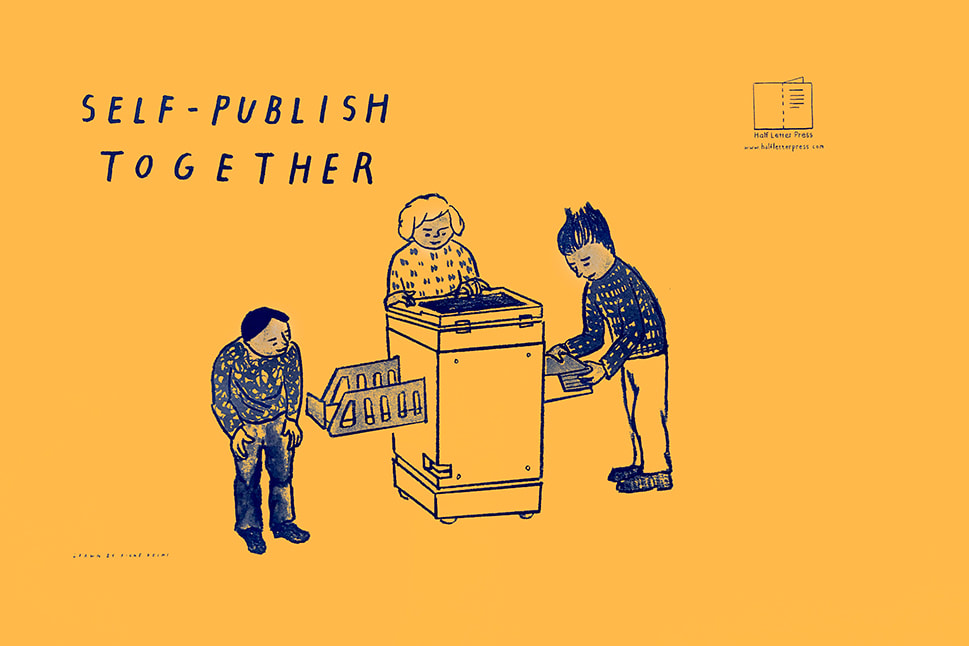 Really this post is just an excuse to share the two beautiful graphics of Half Letter Press, and the printed illustrations of Kione Kochi. Half Letter Press was tabling near me at the Detroit Art Book Fair in 2023. The wonderful news is that we have succeeded in creating a truly unusual book called Field Guide to Ambiguity! What is ironic and funny is that the final stage of distributing this book remains shrouded in unknowns. I have however, been sent two beautiful advanced copies, and I could not be more pleased. Here are some pictures I took the day I received my advanced copy. I was hoping to meet the shipment of books in Boston and let people come celebrate with me, but I recently learned that they won't be arriving in time to do that. AND YET! I will be in Boston with lots of other treasures and invite you to please come join me at a sweet open house on Dunster Road in JP on the evening of Friday December 15! This is an incredibly talented group of old and new friends. Join us! If you reserved Field Guides as part of my kickstarter and can meet me there, I can hand you 1. Everything else you'd be getting depending on what reward tier you selected, 2. As well as a card for each Field Guide you will get in January. That way you can give the card as a heads-up/stand-in holiday gift. 3. I will also have new prints and things from the studio that you likely haven't seen before, and there are many beautiful artist and handmade wonders to discover on the 15th in JP! If you are in Ann Arbor on December 23rd, I will also be holding an open studio with (fingers crossed) actual books you can pick up. This will be from 7-9pm at my studio on Brierwood Court in the garage. My final analysis is that I’m just not as in control of my life and of outcomes as I want. I look around and see my elders in the midst of their lives and what’s going on for them, and remember that this situation is the human condition, becoming more stark with age. I knew this in theory when I was 20, but I didn’t know it through experience. Accompanying me through this experience of uncertainty is adjusting to new normals with my wrists. Thankfully, they’re out of all kinds of splints and casts which makes sleep comfortable again. And yet, it’s still confusing. Moving a small aluminum ladder causes no problem, but loading my woodbox causes pain for three days that I didn’t anticipate. The wrists also affect the final receiving of these books. For example, I can’t lift a box of books, and I’ll be receiving many of them, and watching others :) move many more. Here are some of the questions I’ve grappled with in the past three months, once the book was fully completed at the printer. -where would it be best to have the books sent? Boston where I store them, or Michigan? -when will the shipment arrive? -where in Michigan can I store these books for a reasonable price where they’ll be safe? -is there room in my house? -is my house structurally ok to hold 1000 pounds or so of book boxes? -how much will it cost to send the postage out exactly? -what kind of vehicle will be available to transport my books? -will the vehicle be reliable for a cross country drive? -will they arrive before Christmas like I set as an intention last January? -what should I tell people? -how can I get the books off a palette and into my car? -do I need help? -should I ask for help? -what kind of help might I need? -how do I ask for help? -where did all of those chargers go that I put in a bag? -where did I put my airpods? I just had them… -where are my *#@*&^&% airpods!?!?! -was I supposed to be somewhere earlier today that I forgot about? -how will I make plans with family when I don’t know when the books will arrive or where I will be meeting the books? In other words, this project and surrounding events have taken a bit of a toll despite all of the help I have received and taking a full year to make this happen, rather than trying to shove it into 4 months. There have been no easy answers to these questions. The answer has remained Wait and See. And as my friend Priscilla likes to say, the answers are up ahead. The book is beautiful and well crafted. And, unlike the novel I’m reading that just came apart in three pieces, this book is sewn and glued, and built to last as a bonafide Field Guide. Also, I LOVE the cover color - it is exactly what I drove an extra hour and back to Ellsworth Maine to ensure. Sometimes I’m just watching a show and laughing and eating a good meal, or hanging out and having coffee with a friend or listening to a good podcast, or sitting in a patch of sun. At these times, everything feels fine. At other times it doesn’t.
I’ve picked up my copy of this book several times and said to myself: Yes, this is the thing I need to read right now. I need to find my situation in this book, and ask myself some questions there to get my bearings, to pause, to reframe what’s going on without anyone being prescriptive with me. And that’s what I’ve been doing. Like with everything, I don’t always remember to pick the book up, but it’s there now. We made it together! And I thank you for making that possible. We’ve done it, it’s a great thing, and the book is almost here. It will get to you in January, if we can't see each other in December. Again, if you live in Ann Arbor, and want your copy before Christmas, I will hold studio hours on the evening of Saturday December 23rd if all goes well, from 7-9, and you can get your copies and anything else I have in there :) for under the tree. And then I’m taking the week off to enjoy the quiet before a new year begins. by Christopher Porter Tue, 06/06/2023 - 3:30pm A FIELD GUILD TO HANNAH BURR: THE ANN ARBOR ARTIST CREATES ABSTRACT WORKS THAT CONJURE CONTEMPLATION From PULP Online Magazine Hannah Burr's art seeks to foster connections, not only between the viewer and the work but also between the viewer and the universe. The Ann Arbor artist works in everything from painting and drawing to sculpture and books, but no matter the medium, Burr's art acts as a prompt for observers to consider how they relate to the world around them and beyond. Burr's dedication to contemplative matters is perhaps best shown in her series of books, such as Contemporary Prayers to * [whatever works] and Elements: a love letter to all things everywhere, which marry aphorisms or scientific facts with abstract paintings and ask readers to observer how they feel when taking in the words, colors, and shapes on the page. Her forthcoming book, Field Guide to Ambiguity, is currently in its Kickstarter phase, and like Elements, is coming out via Fifth Avenue Press, the Ann Arbor District Library's publishing imprint. This follows a 2021 expanded and completely reworked version of Contemporary Prayers, which was published by Simon & Schuster. Burr is one of more than 80 artists who will display her works at the West Side Art Hop, held annually in Ann Arbor's historic Old West Side. This year's Art Hop runs June 10 and 11; a map of the home/garage/yard venues can be found here, but Burr will be at 701 5th Street. I caught up with Burr ahead of the West Side Art Hop as she preps Field Guide to Ambiguity and other projects, many of which she documents in her well-maintained blog, Good Bonfire. Q: Where did you grow up and what brought you to Ann Arbor? A: I grew up in Boston, Massachusetts, and mostly lived just there until 2017. I married an Ann Arborite and did the covered-wagon thing like many Midwesterners before me, bringing my home and studio here. Q: I saw that you graduated from Brown with degrees in fine art and religious studies. Has your artwork always been informed by the mystic and metaphysical? A: In a sense, yes. When I first graduated, a mentor suggested I just focus on one thing, and I chose landscape as my subject for a month. Landscape remains one of the mainstays of my visual art over 20 years later. Over time, however, my interests in philosophy and poetic expression leaked into that simple endeavor and I began drawing landscapes in pen on envelopes where the main address goes, sending these out with postage stamps. These mail drawings then were returned to me "for better address." This stack of mail drawings became my first conceptual project: a stack of artwork sent through the mail called Field Notes, investigating "when writing becomes drawing." The drawing activity was a form of inquiry, and the landscape I drew felt like the response. In a sense, yes, even when I tried to keep it to simple landscape, my work often became about something more metaphysical. For what it's worth, I consider myself a philosopher expressing ideas through art media. Q: Artists generally like to have reactions to their works, but your art seems to exist specifically to inspire viewers to find out what it sparks inside themselves—emotions, memories, place in the universe—rather than just invoking an aesthetic appreciation or experience. A: That's an interesting observation. I think, in a sense, of my work as having its own kind of presence—a potential, perhaps, that wakes up the same alive quality in someone encountering it, if it resonates with that person. I don't plan this, but over time, I suppose I've observed that to be the case. That may be the case with all artwork: the greater the mutual resonance, the more an artwork succeeds. Lately, I've been thinking of my individual artworks playing a role a little like a talisman, a mezuzah, a blessing, or a clearing-type object for the spaces where they hang. Q: How has your working process for these books changed over the years? Do you write the prayers and then do the art or is it more of a simultaneous creative endeavor? A: My very first book was in 2013 and was called Contemporary Prayers to * [whatever works]. The second in 2016 was called Help me [ ], do the thing, and the final in the series confusingly has the same name as the first with simpler punctuation in the title: Contemporary Prayers to Whatever Works, from 2021. This last one is a new book in the series, published by Simon & Schuster, based on the artwork and the concept of the first book, but all new artwork and prayers—distinct from the first. I make the artwork on its own, initially just playing around in my studio, and develop a concept for the book concurrently. Once I understand what artwork will work best, I often take a small initial selection of artwork and expand upon it, while developing and refining the concept separately. In combining them, further insights lead to refinements. Because the artwork is as important as the text, I finish editing the book with the visual layout in place. Q: Tell us about your upcoming book, Field Guide to Ambiguity, and how does it fit in with your other books? A: This is a book that feels appropriate for the world we're living in right now. It's a guide to free fall or to being human: not knowing what will happen next. Each "specimen page" is an ambiguous situation, it's variations and a brief contemplation. It's a practical and poetic way to reframe and reorient yourself to the specifics of your situation, with prompts for journalling, indexes and directories to find your way around. In some ways the premise of the book is ridiculous: How could ambiguity be classified? And the punchline is that in many ways you yourself are the most ambiguous thing of all. I intend for this book to be useful as an orienteering tool, without being prescriptive, specifically for when you are in life's washing machine and it's hard to feel grounded or centered. It's full of questions to ask that don't really require answers but can help you to rest in the middle of the unknown, a natural and intimate, ever-present backdrop to everything. The Field Guide to Ambiguity began about 10 years ago with the title, just when I was starting to immerse myself in field guides for rocks and birds as a hobby. Sometimes a phrase shows up for me that has real power but I don't know what to do with it. This happened years before the first book of prayers, when I heard this phrase while I was drawing one day: "I will always be the tree in your yard." I wrote this down, and many years later, this remembered phrase became the prayer, "Thank you for being the tree in my yard and the chair that I'm sitting in," a page from the first Contemporary Prayers book. The title Field Guide to Ambiguity came to me in a similar way, and first had me breaking down the structure of a field guide to understand what it was, and how it might apply to all of the ambiguous situations in our lives. Similarly to the Elements: a love letter to all things everywhere, my third book, there's a creative reframe of something scientific the Field Guide to Ambiguity. In Elements, it was a new lens on each element; in Field Guide, it's a new lens on the field guide structure itself, and an invitation, repeated throughout the book, to see for yourself how things are, to observe, note, and explore your direct perception of a situation, the familiar, and the objects around you, much like in Elements there's an invitation to find the elements in the tangible objects of the world. Like all of my other books, the structure of this book is lateral, meaning that you can open to any page as a starting place, and it doesn't have to be read linearly. Also, there's a series of more than 80 color works in the book, so you can approach the book visually, conceptually, or like a book of poems. Like the last book elements, there are several indexes and directories, so that you always feel oriented and able to navigate through this nebulous subject, and the images are minimal and colorful, with lots of space around them, so the concepts have space for real reflection. Unlike the other books, there are several essays in this book. Q: Contemporary Prayers to Whatever Works was picked up by a major publisher in Simon & Schuster. What made you decide to return to semi-self-publishing and Fifth Avenue Press for Field Guide to Ambiguity? A: While I had a positive experience receiving an advance and having others print, pay for, and house the books with a big publisher, I found it pretty unsatisfying to have to buy my own books like a retailer, and that the sales reps tend to focus on their cash cows like Stephen King while having no real investment in selling the book of such a small fry like me. When I do my own printing through a crowdfund like I'm currently doing with Field Guide to pre-sell books as the way to bring the book to print without going into debt, it's definitely work up front. But I end up with the book file, final sign-off, and a whole community to help build the book and whatever books I raise the money to print, to do with as I like. This way, I learn more about how the book is valued, perceived, and who my community is, and those who back the project get their name in the book, to invest in it from day one before it's printed, and we are in direct contact with no middleman. A very valuable added bonus is to have AADL's very own press support it with input from a designer, some publicity, and an editor, right in my own town! Again, it feels much more about human relationships this way, than about a massive institution giving me some kind of gold star of approval but not a lot of follow-up support, and fewer sales than when I do it myself. Q: In addition to your books, what are the sorts of works you'll have on sale at West Side Art Hop? A: In addition to original paintings and drawings of my own—landscape and pure abstraction—and the books, I will be sharing the gorgeous and technically complex prints of Ann Arbor artist Janet Gallup, who lived here, had her studio and family here, and died here at age 67 [in 1991]. I have been archiving and photographing her remaining serigraph prints for our dear friend Al Gallup, who did his very best to care for her remaining work and is now 96, one of the oldest continuing, lifelong residents of Ann Arbor—who still occasionally rides his bike and makes cookies for my husband! This will be the first time I share her works for sale, and I'm really excited about this! I will also be sharing a short run of letterpress cards for the first time, and through Sunday, June 11, for anyone who backs my crowdfund, doing a giveaway of a set of five of these limited-run cards as a thank you for reserving the upcoming books. I will be showing alongside Lynda Cole (prints and paintings), Monika Rykoff-Wilson (ceramics and photos), Cathryn Amidei (fiber/textile art) and Valerie Mann (paintings, cards). We'll be at 701 5th Street under the colorful painted garage of Cathryn Amidei, 10 am to 5 pm on Saturday and 12 pm to 5 pm on Sunday. To see more images and learn more about the upcoming book, visit bit.ly/fieldguidetoambiguity. Christopher Porter is a library technician and the editor of Pulp. There are two parts to this post: One is peppy: a giveaway for the last 24 hours of the campaign ending midnight Thursday June 28! If you back or increase your backing I'm out before the end of Thursday, you can win a copy of Andrew Innes' is amazing card game, ANOMIA signed and everything. That story is toward the end of this post. BACK AND RESERVE FIELD GUIDE The other is more personal. As I'm trying to understand how to resolve the design of this book, I'm realizing that the situations I'm in continue to offer good examples of ambiguous circumstances in which I'd like this book to be helpful. This book is the opposite of a map or linear process. It's learning to feel situated when you don't know where you are. It’s learning to feel at home right now without understanding what 'this' is. When real things are at stake too, not just with an elegant little hypothetical or philosophical or slightly inconveniencing conundrum - but when you really don't know if it's going to be OK on the other side. What the book offers is a structure for exploring - it isn't linear and it doesn't necessarily lead to a concrete place. It’s an inquiry process. The abstract artwork is somewhat like the strange, fragmented views that we have in unknown places. For example, how it was with my eyes closed while I was being wheeled from the car through intake and into the emergency room and began to weep. I interacted with about four people and never even saw what they looked like. Or the unfamiliar smells and sites and sounds in the X-ray lab combining with the pain and the accent of the person that I've never met who was speaking to me. The foreign way the bedroom is set up for one person with lots of things to elevate arms rather than to sleep next to my partner. It’s the way it feels to have a friend cut my fingernails. It was looking at my left hand and not understanding it as my own body because of the nerve block that was placed at the shoulder. It’s the sensation of metal in my wrist that I wasn't anticipating - not knowing if that sensation will persist or not. It's every day not knowing if it's still true what my fingers can and can't do, or feel. What the emotional landscape will be like today. This book has lists, questions and poetic phrases much like the Elements book. It has ways of going from one page to the next, and for asking questions and exploring what's around you either in thought, writing, sensation or space. There is a core set of artworks that are meant to be in place of the specimens of a field guide and I'm currently parsing out how to best unify the visual language of the entire book and the cover. Mostly I'm running through scenarios in my head while lying down, which is fairly efficient. Part Two_ a little more pep! Last Ditch Giveaway for last gasp backers! A signed original Anomia deck! This is your official last chance to back this campaign and to reserve copies of Field Guide to Ambiguity and have your name in the book - the campaign closes at end of day, Thursday June 28. I have a special surprise to share with you in the from of my brother in law, Andrew Innes. Andrew is a dear friend, and a mentor to me. Several years back, he invented Anomia, an amazing card game with its own deck that is now five different games and printed in many languages, sold all over the world at this point. He was the first person to tell me that I should go the crowdfund route with my first book - which I wanted nothing at all to do with, but I followed his advice and he was right. He is an example and inspiration to me, and given me much sound advice as we meet over grills, hiking in echoey canyons, and while drying massive piles of dishes at family holidays. Anomia is a game that never gets old to play, is wonderful and compact to bring on family vacations, and draws out even the most shy. Everyone essentially racks their brains to remember a word in a certain category (Plant, or Broadway musical eg) before someone else, but the words being blurted out (Ficus! Hair!) have nothing to do with one another, creating a glorious, irrepeatable poem of forecfully produced, random words. Andrew, like me, is a bit of a philosopher/existentialist, with a twist of magician, and an excellent sense of humor. His games are also about something that’s hard to pin down, the decks have vibrant, abstract symbols that when matched become a face-off between players, and a random poetry results, with many reasons to laugh really hard. So get to it all of you dawdlers, reserve your books and win your chance at even extra good fortune and luck! And what’s more, let’s bring this project home. Let’s do it right! -- If you had any trouble with the kickstarter interface, you can also make a donation via Venmo using my Venmo handle @Hannah-Burr-1. Just be sure you let me know what it's for and if you had a particular reward you'd like to get for your donation, referring to the rewards set out on Kickstarter. Checks are OK too. Made out to Hannah Burr. Thank you Today is Monday. Today is my first full day with two broken wrists after a bad fall on Sunday. Today is 10 days before my Kickstarter closes. This is my first attempt at dictation. I'm tired and I can't really use either hand for the next 6 to 8 weeks. I am stunned, disoriented and confused! I am doing this crowdfund for the book Field Guide to Ambiguity. The irony is not lost on me here. This is a tender time. This is the first time I've been in my studio since Friday - about four days. I wasn't sure I could open the door by myself. I can't put my hair back by myself, I can't hold a glass by myself. I think I'm going to be wearing this one floral wraparound dress with a high loose bun which is what my partner Guy can manage with some instruction, on my head, for the foreseeable future. I look like a frontierswoman. I have no idea what to say about the Kickstarter campaign except that this is an amazing book and it is for these moments when things are going one way and suddenly they're going a different way and there's nothing you can do about it and it's hard to get your bearings. This is what I'm going through now. Here's how I would use this book when it is in physical form: 1. I would use the journaling prompts in the first section of the book. I would ask myself What's going on for you right now honey? What are your questions? Those are a couple of the prompts from the book. My questions right now are: When can I next take a shower? How will the surgery on Friday go? Will I recover the use and range of motion of my dominant hand fully? What's going to happen with my plans for the summer? Can friends can come and help me? What kind of help do I need? Who can I ask? What will I ask? how do I ask? 2. Next I'd star or circle one of these as my primary question. In this case it would be a general question about total lack of control in outcomes. I suppose the main question is : Will I fully recover the range of motion in my left hand? I've never broken a bone before and my left hand is my closest ally in life for so many reasons. Right now it almost feels like it died. Hand surgery is on Friday. 3. I'd then go to the three directories in the field guide, and I’d look for that primary question in the directories. And I'd find Health and illness Solitude and socializing Disappointment Upheaval and change in the Life Themes directory. I'd find Surprising Embodied Electro mechanical Sensory Relational in the qualities list. 4. I’d then go to the indicated page numbers, to reflect and to see if it helps me get my bearings. Here's what it says under Embodied Being in a body comes with a litany of sensations. Embodied, we are constantly in flux, interacting with the world of objects, people and places. We say it's 'my body' but this body is about as yours as a forest, a coral reef, or a flock of birds. On paper we can agree that it's mine, but aren't we more just along for the ride, an arc of life touching down in this envelope of skin? Our bodies run themselves, breathe themselves, regulate their own temperature, scratch an itch, and take us to the bathroom on our legs when it’s time. If we had to beat our own hearts, we'd likely be dead right now. This category includes situations relating directly to our bodies or embodiment as an experience. Situations that are embodied might include Falling (26), Climbing (28), Unfolding(30), Hearing (32-34), Opening the Refrigerator (36), Tasting (38), Going through (40), Depositing (42). Under the main list of ambiguous situations, which is a list of gerund verbs, is included Falling as well as Going through. Ironically, while writing this book, my favorite was the Falling ambiguous situation. It's variations include falling with fragile goods and also falling in love. Here's with that page looks like. And here's what it says: And here's another page called Going through and here's what that page looks like and here's what it says there The experience of turning to these pages is simply a tenderness, a gentle balm, and a slight reframe suggested through questions. I don't feel like writing right now because I can't use my hands, but just reading what's there is a reminder that was happening is not unique to me, that's very human and understandable, and is helping me widen the view a little bit, situate myself some, and not feel so alone.
There's an abstract artwork to puzzle over and there are many through-ways in the book via directories placed within these pages so you can also just flip to to find what you relate to or find interesting. That's what this book is: it's a gentle celebration of humanness and the free fall that is our lives. My first book came out of a very ambiguous time in my life, and prayer was a huge part of how I found my way through. This is a gentle hand hold, this book, it's very sweet in its tone. When there's a raw moment going on it's a way to get some perspective on it, without needing to be any different than you are, without anything needing to change. There's a section at the beginning of the book where discomfort and ambiguity are explored: When I'm uncomfortable it's usually a sign that something really uncertain is happening and I want certainty. I want normalcy. And we don't always get that. When I was writing an earlier draft I had five early readers. Their feedback made me realize that I want this book to be something that my elderly friends who are falling a lot and whose lives are not looking the same as they did even a few months ago can relate to, I want it to be something that people being displaced from their homes maybe in California or in the Ukraine, or in Syria may encounter and find some kindness in. I can't say that right now I'm feeling as fun sense of adventure around the fact that I don't have use of my hands for the summer, but I think in a few days I might find this book helpful. It's pretty ironic that falling is what created my ambiguous situation and that Falling has been my favorite situation in the book. I think there is a clear admittance on my part that I can't do all that much to be helpful to anybody as another human being, but this is just a way to draw attention to this human predicament we are in, and to talk about it both directly and also obliquely, with some color in form, humor and kindness in the shape of a field guide. If you are wondering how you can help me right now, you can back and share this campaign. This is also the week my email stopped working properly, so please use yours to share the project. I set about honoring this Field Guide project early this winter, and it began to become clearly the thing I was to focus on. It's been a lot of months of creative and plain hard work, and we are at about the halfway point in this project.
The kickstarter goal was officially met last night, with 15 days left in the project. This is a very important moment when I know I can bring this book to print. When I began the campaign I wasn’t sure you would support this project, because one can never be sure. It wouldn’t be a smart move to be sure of such a thing. When 80 people generously pool together their resources to reserve this book, ensuring that it can be printed, it's truly something to celebrate. As if on cue, I noticed this morning that there were a lot of garbagey thoughts lurking: the you’re-not-worthy type of thoughts. Artist’s are a funny breed. We do stuff other people don’t always give themselves permission to do, and sometimes what we’re compelled to do seems very self-involved. When I’ve set boundaries, gone against the grain of a situation, I’ve been told that I’m selfish. Even very young I heard that so it gets in the hard wiring. You could argue that making art is selfish, because it puts down the immediate needs of others around you to listen and respond to something interior, and it's not always possible. At a moment of success like this, a scrim or fog can float under the door. It quietly insists that a) this is somehow about me b) that this is evidence of something about me that’s wrong c) that it’s time to go back into hiding, lay low and small, and stay in a permanent bowing position. AND YET. This book showed up in my heart ten years ago, and it didn’t go away. Many synchronicities came about to keep this project alive, to develop it, and to provide the medium for its flourishing. I haven’t forced anything, I am not this book, and over and over again when I stepped back to ask for guidance on what to focus on, this book has been the indicated thing. And here we are. Just about halfway. There are 15 days left in this campaign, and I’ve raised exactly HALF of what it costs to fully realize this project. The groundwork is now solidly in place. Together we have gotten the cost of printing secured. My editor Darina has sent me her first round of edits; I left her with the express request from me that there’s no self helpy or prescriptive tone to this book, and that it remain engaging, unified and clear in the writing from the first to last page. The artwork is complete and all scanned at 900 dpi, and in place in the InDesign file. There is more work to do, and this campaign is not over. Aside from the additional costs of warehousing books, mailers, initial transport of the book, help with fulfillment, additional printing costs for sharing the project pre and post campaign, I will be spending four months focused on making this book a beautiful, well conceived work of art. My initial goal of $5500 is exactly half of the $11,000 needed to fully realize this project. To that end, the new goal is to have 100 new backers at $50 or more - two books per backer, to bring this roundly to a successful close. I have to build indexes, design the cover, find a means to differentiate two sections to help orient viewers, response to edits, and possibly resize the book. I tend to underestimate what is needed for these layered tasks, and I need several months to do them calmly and well. This means I don’t spend my time earning money in other ways, and have no buffer to cover the basic operating costs to do things like buy chord wood to heat my studio and to pay for software and utilities. Please keep sharing the campaign, reserve your copies, and spend time playing at something creative and impractical that lights you up a little bit in the name of all creative endeavors everywhere, realized and unrealized. Thank you again for your attention, time and support. Feel free to ask me anything you like about the project, and I am so glad you are also a part of this book! Learn, back and share the Field Guide to Ambiguity Project here. In case you missed it, I have a new book to share: Field Guide to Ambiguity. It's a field guide and a book of art, philosophy and play, and a practical tool for when things don't go as planned. I just found this piece of journal writing, the earliest document in the Field Guide file folder. It's a journal entry from August 2014, almost 9 years ago . It's part of how this whole thing began, and an illustration of an ambiguous thing in process: Journal Entry August 2014:
"I was going to write a book about ambiguity. I was going to wake up every day and spent two hours with tea in a drape-y kimono style bathrobe, writing undisturbed. And then I saw that ten other people have written books that probably say something toothier and more meaningful then I was going to say. And I didn't pick it up again. I have the stuff here, the outline, the next steps to research. I recall sitting right over there across the room at the table, vigorously scribbling down my stark insights and connecting the dots. A whole outline came out of that. But now it seems passe and boring. Something tells me it's been done. So again, I think about what is different about what I have to say. Well, I'm an artist, I'm visual, and my friend has been reminding me about journaling and drawing out ideas and experiences, beyond just writing them down. And I'm curious if I might share this experience of ambiguity in a new way. I know I could make a pretty colorful and delightful object of a book. I'm an artist and a designer after all, I have done so before. I wrote a book about God that doesn't use the word. It's a book about calling out to something that you're not sure of, and more certain of in your bones than anything else. If that isn't a book about ambiguity then I don't know what is. I know too, that a simple creative act is like a piece of tasty meat, a real nugget of real value, especially when it just arrives and we just feel like doing it. I know this because my brother in law Andrew asked me to listen to a simple song he developed, thinking about my dad. When my dad died, I was holding his hand, and Andrew was asleep on the couch right there in the room with us. We had sung the Doxology to him. A family hymn. We had sung with my sister in harmony, the way our family has done at easter dinner and christmas and thanksgiving for many years now. It's only four lines long. I sat on the porch in the sun and listened. My niece Max was talking to me and I was nodding to her, but I couldn't hear her, just this piece of beautiful music. Tears were coming down. I have never heard anything more beautiful or meaningful. And it was just because he felt like it. He created a kind of nourishment. Something meaty and real. I can do that too. By writing this. By spending time with expression and idea. By having patience and returning. Becoming intimate with something no one else cares about. If I care and I explore, the food will take form. What I know is that I make work about what is ambiguous. About the in-betweens. About in some of my writing, the fear and trembling that comes when you start to see the maw of unknown. When certainty in who you are and what you are here for, falters or falls away, leaving you exposed and disoriented. Right now my aunt jean is up the hill, several years into a cancer that is making it hard for her to walk, impossible for her to drive, with a wound that won't heal and a bony tumor actually coming out of that wound. She is dying, but she's also not dead. She's very much alive, talking about her woodpile and her grandson, thinking about when to initiate a fast which is how she wants to end things. Will she be here next summer? Will she be here in a week? What could 'be here' actually really mean in those phrases? So I write about this precipice we are always on the edge of. I made a book meant to help navigate it with prayer. I make artwork that is about relating to and experiencing it. And I'd like to make another book that is simple, delightful, unusual, and another take on ambiguity. It doesn't have to be the best book in the world, it's just a book, like millions of others over the centuries. It's what we as humans do. But it feels good to offer this like a guide book. Perhaps it's like a scientific guide book, a guide like the peterson's guide, to the ambiguous. What are those books made of? A definitive and clarifying title: Mine could be - A guide to ambiquity. An explanation/introduction. Some writings, as markers of chapters or other structural hallmarks to the book. Some diagrams, some illustrations, some specimens laid out. Some kind of format that repeats, like in a guide book, that helps to orient, educate and inform the reader, so that in the end, they have a reference book. What are the units of a guidebook to ambiquity? In the bird guide they are birds. In the mineral book they are rocks and minerals. In the mushroom book they are mushrooms.... "If I care and I explore, the food will take form." To see what has slowly grown like moss over the nine years since I wrote this, please visit the project page and please reserve your copies to bring it into print. I made a feast y'all, and it's almost time to eat it together! ** The front image is of my studio rug, some of the ambiguous situations laid out 'Falling' and 'Opening' being examples, to work out taxonomy and pattern for the book. Those green things are from 2013, small handsewn first dummies of what might be in the book. The book started out kind of self-helpy and slowly has completely morphed into something I like much better, reflective, playful, wonder invoking is the idea... The second image is of these ambiguous situation verbs having gotten soaked by spilled water after careful color coding, and artworks that pair with each one, throughout the book. Please back and share the project to help the book come into print by the end of 2023. Thank you. Art friendships are the secret elixir of an artist's life, if you ask me. They are way of getting perspective and remembering to stop and consider milestones, to be kind to oneself and to see things from another perspective. Sometimes, I meet with artists in a more formal way. I find this Studio Visit practice to be more of an east coast norm than a mid west norm. We'll sometimes use a specific structure to meet and work together over the phone, over zoom or in person. Above is my a picnic visit with dear friend and amazing photographer Lisa Abitbol. We met when she bought a painting of mine in about 1997 and stayed mulitple hours (like six?) at my studio when she came to pick it up. Here is a the kind of formula that I've used with others that help this kind of meeting work well for me and those I meet with (Ceramic artist Leiligh Towfigh calls these "artner" meetings!). I have also created this kind of structure as a coach for artist groups while working with the Arts & Business Council in Boston. Time boundaries - these allow me to sink into listening better, or sharing, knowing we've got a shared understanding and plan. 1. Check in about time at the beginning so you know what you've got to work with. 2. Do a 15 minute check in each (depending on the time you've got), leaving the last 5 minutes for feedback from the other. It is really helpful to have one of you keep time, and not to be squeamish about just stating when time is up. Otherwise, the vagueness of time creates a little energy leak that's unnecessary and counter to really diving in. In checking in, I like to answer and suggest to the other person some combo of these questions as prompts: "What am I working on? What's going well? What are my challenges? What would be great to walk away with from this meeting today?" Sometimes we choose to respond to these or similar questions by writing on these questions first, and then we each check in for 5 - 10 minutes and give feedback. Usually, there's an obvious interest in the talking or the writing, depending on how the day is going. 3. Once that's done, we look into what kind of time is left, and we might do a second round with more focus on whichever is most either in need of support or perspective, or we work quietly in parallel, leaving 5-10 minutes at the end to check back in on where we landed. (Above is an image of artist and friend Paloma Nunez Regueiro visiting me with some of her treasures in my studio last fall). 4. If it's a regular meeting, we might want to mention steps we intend to take in that wrap up, and then we may start with how that went in the check-in next time. It's also very important that you be clear in the kind of feedback you are looking for, and what you are not looking for. Some people give advice or critical feedback on a project you have completed, and that can feel yucky when you didn't ask for it. If you're not sure, ask: What kind of feedback would you like?, or what questions do you have for me? Try to avoid seeking approval for your work or just giving empty strokes of praise - so the exchange can have some meaning and depth. There are also many critique type processes that you can also apply with a little internet sleuthing to get pointers on this if you'd like them. Some of my regular artner friendships have been with Sue Murad (film, performance, artist books below), Andi Sutton (interactive and public projects MN), Valerie Isaacs (painting), poet Carrolle Morini (poet and librarian), and Erika Blumenfeld (literal artist to the stars). May there be many more to come! I've talked about studio visits and I want to stop and consider how generous an art practice can be at bringing new people into one's life. There are the people that I see at openings, art colleagues or peers, there are also curators and gallerists who become a part of one's working process and professional team at times. And then there are the art friendships - a true gift of creative practice. I find they are indispensable for sanity when otherwise I would be working in total isolation.
One type of art friendship is a collaboration, and I don't have enough experience with collaboration to know if it's a requirement to be friends to collaborate (please share your experience in the comments! Enlighten us) but I imagine so. I've had friendships that have been fairly short lived based on geography or a certain intensity of interaction and then there are the slow burner friendships that happen over decades. I have made close friends with someone who came to buy an artwork and stayed for six hours (Lisa Abitbol). I have been match-made with a friend because of the parallel content of our work and workings of our minds (Sue Murad), I've had unexpected windfalls of friendships where the generosity of a stranger like my friend Kirsten Lund has lead to not only our personal friendship, but to being in an artist group and the initiation of many other art friendships through that group. I'm not a musician, but I imagine that there's a similar bond. It's not that every artist would be friends with every other artist but there's a certain need for support and connection and camaraderie in what can be such an existentially fraught and isolating field. This is why I stop and put in a word about it. *The above image is of a fine creature, Amy Sacksteader, in her studio on a studio visit in 2022. One thing that's been important in the friendships that I have is a sensitivity to what's going on for other people and a respect for the differences in your lives and careers, an awareness of the other people in the room beyond your own context, when possible. In this vein, the line is fine between self promotion/celebrating a success and general obnoxiousness. Your art friends are not your entourage or to hear your woes in excruciating detail so that you forget that they are a living being in front of you, or to do you a constant stream of favors in a pinch. And yet, showing up, listening, sharing honestly, and asking for support are part of what creates meaningful intimacy. I've learned these lessons over the years to varying degrees by being that one that's asking for something unreasonable without knowing it (sorry all of you who endured this! you know who you are). We learn through friendships, that's the beauty of it. We learn by trying, and sometimes it's growing up together. Sometimes art friendships can look like your party buddies or people you do hard drugs with. That kind of rapport aren't generally the easiest to sustain because they're not really grounded in reality, but they can make for some great stories! Art friends from my youth have seen me wearing ridiculous outfits and going to crazy parties and acting the part, and they've seen me deeply confused and lost after difficult professional setbacks in tears. They've looked like a bunch of delightful faces showing up unexpectedly at an opening or at my father's funeral, and sometimes they look like a collector that just deeply values what you do and is inspired by even the strangest little work. Art friendships are also all the people that participate and took an afternoon to be a part of your project, to try a wackadoodle idea in exchange for some pizza. It's something that is an extraordinary dimension to my life and I'm so happy that I get to keep exploring what an art friendship can be as I continue to invest in them. I've been making interactive artwork for the past couple of months (and about 18 years before that). Interactive artwork sounds a little highbrow, but in fact, it's just like a turnstyle, or a book, or a shoe: it's something you are meant to engage with in a physical or experiential way, rather than simply look at. My books are interactive art projects, in that you pick up, flip through, and experience the object to experience the work. Which is the idea. I never set out to make this kind of work, but I like it because it's a playful way to attempt to embody an idea. It's different than installation art because an installation isn't necessarily something for you to touch (but something that can be a whole room or environment). It's not like sculptures or paintings I make either, because those are also not for touching. I sometimes make interactive projects, like some of the work in the upcoming show Energy Transfer at the Ann Arbor Art Center, because I like things to be activated, energized, and as simple in concept as I can make them. One project in this show invites you to place an object, in this case stickers, on a surface, as you have certain specific and familiar experiences, like seeing something pass by out the window. Another project invites you to imbue a mundane activity, like putting away a dish, with a specific intention, like sending someone love. In a way, all objects around us are there to be picked up, interacted with, related to in a particular way, much like all the objects in the video game Mindcraft are tools, or implements, for your use. In another way, everything is a little like an icon on a screen, also there for you to engage, like a light-switch in a dream. I've been playing with 'things' in this way for about eighteen years, and slowly the methods get simpler. The only way I can really know if something is working is to try it out, and then refine it over time. By trying it out, I mean sharing it. Because unlike objects, you are more than an object, dynamic and mysterious, and by sharing my work with you, my work comes alive and yields insight. So you are the magic ingredient in my work, showing me where there's life in something, (even if you are not loving the work it might be so), and where I will keep digging. I studied art and philosophy (religious studies but same thing really) at Brown, and in a way the conceptual and interactive projects are a form of embodied philosophy. An experiential way to share, versus making you read a paper. But here you are reading so - hah! The exhibition has four artists and all of the work is interaction or installation. There will be shimmying plants and spinning tip ties, helmets and a pile of things unearthed from the basement. It will be the first of many interesting shows at the center this year, and it is up until Feb 27. Come by and try some sacred dish shuffling, lift weights with bags of sugar, and see what it's like. Further details on the show: Energy Transfer Up through Feb 27. Talk at 11 am Sunday Feb 19. 117 Main Street, Ann Arbor MI 48104 (734) 994-8004 Some related projects on my website: Visual Traces of Groups at Work Attendant Empty Full You Are Legend My studio journal is a key object in that I use it to function. I sit and I keep track of these very nebulous ideas and threads in my thinking, pin them down, ask questions about them, and come up with small actions to take around them, to develop an idea further. The studio journal is sometimes a place where I take stock, or make lists of things I want to do, or where I ask questions and later answer them, or where I take notes on technical processes. They are a jumble of a lot of things, but what they don't include is personal life anecdotes or complaints. I have a separate journal for that. The studio journals become important documents to me because they include important moments of epiphany and revelation, including formulas for how to repeat a successful process I developed, and what if questions like 'what if I tried this...?' . These questions can lead to a whole new body of work. The other way that my studio journal becomes valuable, is that when I come into the studio it's like a touchstone, a place I begin. I can open that journal and sit with a cup of tea, just read a few pages and immediately see where I was last time I was there, where I was, what I was thinking about. The studio journal is the essential thread that weaves through my creative work. Some of my work is very idea based and so when I'm writing statements and descriptions emerge, or an email emerges that I'm trying to articulate as a question or thought. Some of what's in there is simply visual observations like "that needs more red in the upper right corner." For a while I discovered that having sticky notes was also helpful so that when I sat to respond to a particular painting or drawing I could make a note and put it right on the back or front of a piece and then know exactly what to do next with it. It's a similar thread to the journal that makes it easier to re engage later when otherwise I would walk in a just see a complete mess and feel demoralized or lost. For some reason in an art studio, there are existential moments when it can be hard to know what I was so excited about the day before, and to feel like nothing of import is happening anywhere, even if you're surrounded by evidence of projects, industry and activity. Having little notes to myself, little recorded thoughts, questions and ideas gives me something I can plug into -it's a little like passing a baton to myself day after day in an insane relay made for one. Do you have something like a studio journal in your process? I find that mine is simple and plain, nothing too fancy or elegant. What about for you?  This is a detail of a 21" x 21" pour painting that I just finished this month. It is called Bullseye Slurry and its acrylic on upholstered wood and iso board. It is in an exhibition called "18" at the Janice Charach Gallery in West Bloomfield MI. Opening on January 15, 2023 3-6 PM. I will have five paintings in this group show of Abstraction. Happy holidays from the land of uncertain outcomes. What land is that? It's this land, the place we will be until we one day are not. I was going to go to Boston, but then a family member / host got Covid, and that began a cascade of uncertainties. Can you relate? Was it covid? the snowstorms? The war in Ukraine? Now it's 2 degrees outside, with a much lower windchill factor, where we are hunkered down in Michigan. There is a blazing fire in the woodstove here in the studio and I can't feel my fingers despite this fact. I sound like a real Debbie Downer today don't I*? The silver lining on this whole thing is that, right now, from where I'm sitting, everything is actually fine. Even though I don't know how it will be in an hour, I'm actually in a good mood. The birds are all puffed up as big as possible and at the feeder almost constantly to not become instant popsicles. They are the most cheery and visible to me at this moment, of all the creatures including humans all across the globe in extreme weather and life conditions. Whatever your conditions are today, whether optimal or sub, they are always in flux. I think the abundance I want to celebrate, with gifts, good food, candlelight and nice music, is that in the midst of the mess that is this human life, there is so much to celebrate, an abundance of evidence that love is never not with us, and that the complexity of what you feel is most certainly that love as well. Brain chatter will tell me that something is always wrong, missing, not quite right about me, about you, about the scene in front of me or coming up. That is how the human brain is wired, so its the default pair of glasses I look through. Knowing creatures are freezing or burning, I invite you to give a hell YES! to the fact that in this moment you are alive, not freezing or burning (I'm assuming if you're reading my post). The sad, the overwhelm, the sheer luck of your circumstance, the fact of what and who is here with you right now: Enjoy it while it's here. I say this for mainly myself on days when its hard to remember. Thank you so much for being with me through all of this year, for your consideration and time, comments, support and friendship. And happy happy new year to you! Peace on earth, in this heart. AND If you want to do some annual written reflection in the quiet hours, here is a post with lots of prompt questions for some quality journaling from last Winter's post when 2022 was about to be: 2021: Consider Your Year This post will aid in organizing your thoughts and to consider your year - the one ending the the one on the horizon. You can also explore all the posts in the archive by year and month on the right side margin BTW. I've been at this blog, burning away for ten years plus! * (sorry to Debbies everywhere) Every time I make a book I make a series of works as a part of that project. For several years now, I am confounded about what to do with the artworks for each of my artist books. What do you think I should do with each of these collections? The collections of artwork are -A series of drawings from my first book Contemporary Prayers to Whatever Works. The above image is one example of fifty. -A series of small bits and artifacts from my second book Help me [ ], do the thing.  -A series of drawings from the 2021 edition of Contemporary Prayers to Whatever Works -A series of drawings from the Elements: a love letter to all things everywhere. and finally
I have these 'Lots' of Collection of really valuable things and I keep them really safe, but I can't decide what to do with them. I am open to selling them, I could auction them in some way, ideas please!?!?!? Thanks! Happy thanksgiving, and leave all ideas below please!! The book Goodnight Moon is strangely a bit of a lynchpin in many of my art projects. Goodnight Moon was a book I grew up reading when I was very young. I'm sure many of you are familiar with it. It features a bunny rabbit and his mom or grandma in a quiet house at the close of the day. It's dark outside and the mama bunny is knitting while the baby bunny lays in bed. The narrator then does a kind of inventory of everything in the room as they say goodnight to it. "Goodnight mouse, goodnight house (there's a doll house), good night brush, good night mush" (there's a bowl of mush). We read the book not only saying goodnight to all of the objects in the room, but also, you get to find and pair each object because of how it's illustrated with little side images of each object. You look for the mouse in the scene, seeing it on the side, as well as the house, the brush, the mush, and so on. I recall this as a very satisfying process, very engrossing and rewarding. I loved this pairing process, and I want to point out to you that in my artwork, I do this all the time, in part I now realize, because I found it such a joy when I was a kid. It's basically pattern recognition, but it's something we're good at as humans, and find pleasurable because it's how we're wired: Look for all the berries on the bush, or the gazelle on the ridge, or the bug in the soup - to keep us safe and fed and alive. As you forage for a plant or a mushroom, or that perfect black skirt, see your lizard brain at work! This same simple and gratifying process happens in at least five of my art projects: Stand In, where I have a legend repeating the objects in the sculpture: You Are Legend, where similarly a legend repeats objects in the room you are standing in. This project hasd happened as part of the Reflecting on the Sacred Exhibit at Babson College, and recently, this August I developed it further while in Vermont, on Turd Hill with an excellent group of artists. My prayer books where an image is large on the left and small on the right. The image below is a page from the newest book, written just before the pandemic, which has new prayers and new images throughout, and was published under the original name Contemporary Prayers to Whatever Works by Simon & Schuster's Tiller Press in 2021. So two different books, same name, printed seven years apart! In Offering Shelf, an asterix is in the object and on the label. The image below doesn't show that, but the label reads ' Every item on this pile is a thought, story, emotion I let go. ' and the pile is detritus and overflow of materials and scraps from my studio (as are the images from the second book Help me [ ], do the thing. (Offering shelf has been shown three times, at Millersville University, Lancaster PA in a solo show I had there in 2010, at 808 Gallery at BostonUniversity in a group show I was in prior to that, and in another form at 555 Gallery in the 2014 solo show there called Placeholders). In Attendant there's a picture of the block in the label, and also in the image. This is Kim Cowperthwaite, at his desk at the Mass Institute of Technology, participating in the project while working. The photograph below is by Lisa Abitbol. Attendant has happened in many places and with many participants including Currier Museum in NH, MIT, the Urbano Project MA, Millersville University, and on Peddock's Island in the Boston Harbor :). Again, it's just like in Goodnight Moon. It's amazing to me that a simple impression from childhood creates an indelible pattern of its own across several decades of my conceptual artwork. I asked you this in the Small Spark post a few months ago, and I'm still curious: Was there a specific childhood moment or insight that you remember affects what you do as an adult today? I mean of course, and frequently from pain. But any you feel comfortable sharing in comments below, please do!
PS! There are a few calendars left! I will be sharing them locally at the TINY EXPO in early December, so get yours now if you are far away. Remember: shipping is free from my shop! See the whole thing here and n Get your copies here! It will be sent to you promptly. It's interesting to have my studio now in a residential neighborhood. For most of my making years, I have had a studio in a fringe place, on the edge of some urban industrial area with shady dealings and lots of concrete expanse. Once I had a studio in a tiny second bedroom of my own rented place in Gloucester MA, and for a year I rented a friend's back bedroom in JP. Now I am nestled in a type of smaller pole barn structure that resembles from the front a one car garage, behind a modest home, in a circle of nine modest cape houses on a cul-de-sac. It's quiet, there is green space just outside the window - the wilds of my neighbor's yard, and the looming trees of a small wooded lot we can walk in.
Our little cul-de-sac which in french means draw string bag, brings people together, like a draw string pulls the bag closed and closer to itself. Especially as in the last two years, we were grounded, a little cabin fevered, and often gathered out front to socialize, instead of going out places because of covid. My neighbors John and Kayla, on our blended front lawn one day just after we'd moved in (spring 2020), asked about my work. I shared about the books. As Kayla asked for more detail, her face lit up and realized that my book was on her bedside table - a gift from her mother-in-law who found it in a local shop. Kayla now has all of my books now in a prominent spot on her living room shelf - a deep honor and a tiny thrill. Kayla is a pediatrician, we had just become neighbors, and from that moment, it felt like, for both of us, a slightly magical neighbor match. Since then she has had her first child, whom my husband and I have taken out for strolls, changed diapers and put to bed, her father has come and helped install the wood stove here in the studio as we built it, and Kayla and her mom have become a big fan of my calendars. Recently while I was doing some gardening and her mom was visiting, her mom asked shyly if she might see the studio, so the three of them came over, Auggie in the stroller, Kayla and her mom, and took a peek. Its a big, active mess in here, but it was really amazing to hear them debate which month in my calendar was their favorite, to hear Kayla describe the kind of completely abstract painting she's drawn to and might buy from me when they move to their new home in New Orleans a few months later, and to experience what it feels like to have neighbors this close. In fact, my stepfather just came to visit us from Boston and spent his last night watching the college basketball final game with John, til midnight in the house next door, because we don't have a TV. There are many other neighbor stories I can tell, but my point here is, art making is also relationships, vulnerability and being seen. I am having whole new experiences as a first time home and studio owner, being in a midwestern town, and prioritizing community above many other things I might have before. - Two Reminders!: 1. My solo show at Barickuda Gallery closes this Saturday, October 22 with a Q & A and talk. The gallery is open from 4:30 - 6 pm, and I'll start talking at 5 pm. We'd love to see you. More details here. If you'd like to see the show but you're far away, I'll do a livestream on Saturday on instagram which you can watch by simply going to my insta feed (instagram.com/hannahburrstudio) on Saturday during those hours. Or, leave a comment here and I can send you a PDF of the work in the show once its down. 2. There are still a few calendars left but they're going fast! I've been selling them at local pop ups and on my shop, where shipping this year is included. I will bring some to the closing event where you can also get them this Saturday. Here's where to buy them online. I wanted to share a little bit about woodworking with you. When I built my studio we made a decision to take the front ten feet of the garage and turn it into a wood shop. This makes for a rather inelegant entryway, but fulfills the need for me to have a place to put the chop saw that I've dragged around for twelve years, and usually just stepped over on the floor. Sawdust makes it really tricky to work in a studio if you paint or have any other tacky surface around. My wood shop is fairly simple and thrills me to no end. There's a drill press that I inherited from my father-in-law Gerald Marshall, there's the aforementioned chop saw, that now gets used all the time. It sits on a metal folding table that someone gave us while we were walking by their house one afternoon. I installed these orange wood racks which somehow make it all official. Even though wood sometimes falls on me in a cascade, I'm grateful that it's relatively organized up there. I use a wood shop as an artist to build various supports and structural bases, and I use it a lot in my home life as well. I've done a whole lot of projects, not the least of which was the studio build itself. The studs for the walls all got cut here and when we were building the space; then, the whole space itself was the wood shop. Next up is to build some kind of a shed so that I don't have to tiptoe around a lawnmower and two bikes and all of the gardening and grill stuff that fills about a quarter of the wood working space. I wear the glasses (in the photo above), also my father in laws, when I'm working with power tools. I really love them. They're probably 50 or 60 years old. They have no prescription in them. For me they create a sense of continuity with my elders. Also in the wood shop are many of my father's tools and my father-in-law's tools. Because my grandfather and father were both woodworkers professionally I feel a deep connection to them both. My father-in-law was an optical physicist and for quite a lot of his life worked as a consultant. Like me he had many creative aspects of the work he did as a self employed person. Both when my father passed away and when my in-laws downsized to a retirement home, we inherited many tools. When I go up to Maine every year, I often add some strange gem at the Liberty Tool Company to my collection like a graphite line scorer or more clamps. I love to pick through the stuff in their creepy haunted space! The woodworking projects, most of which happened during the pandemic include many firsts in wood. I learned a lot about myself as a woodworker in the process and continue to learn and make new things as we renovate corners of the house. I'm going to share in images a few of the projects I've completed. I'm as astonished that I made these things! Thanks for tuning in to this look at what goes on behind the scenes. PS. I don't have any plans I can share because I am a sloppy, undisciplined craftsperson. Rain Barrel Stand Porch skirting Low gateleg table Mug shelf Closet
I've been working quite vigorously on a new series that began about a decade ago with three pieces. The project is called Stand In and it's basically poems in things. In a solo exhibition opening on Saturday September 17th on the outskirts of Ann Arbor, I will share several new pieces in this series, along with two other brand new, related bodies of work - puffy paintings and peg drawings. What I'm sharing here is a little peek at a few Stand In sculptures. At the opening from 4-6:30, Suite 1, 7885 Jackson Road, Ann Arbor MI Sat. Sept 17, I will also be raffling off one copy of NOWISH, the 2023 Calendar that I make a very small edition of valued at $50...so come with your lucky rabbits foot! Each sculpture has three component parts: the base structure, assembled objects, and a legend, like the legend on a map. This legend translates between static objects and lived experience that never stops moving. Here's the Project Statement. These conceptual, sculptural works are found object assemblages used to express ineffable, personal experiences. Sometimes, the experiences mapped through these objects are poignant and moving; sometimes they are awkward and difficult, and or hard to recollect at all. Fleeting occurances like a wink, the last visit with someone, or an interaction, are broken down into its aspects, and paired to each object. In a sense this work is about presence: the presence in objects, and the way presence opens up and closes down in the course of living a life, or the movement through a day. I made this series after witnessing humans in that experience of being separated from their things. It's for me both an exploration of the lives of things, their histories as companions in our homes, and their fate in junk shops and land fills. This human inevitability of parting with what we care for and hold closest, as well as my own fascination with all the 'stuff.' I'm interested in the inside/outside delineation in human experience, what we don't know of another's life, and what's laid open to be seen. Also, what we often can't fully register - those moments - as they happen in our own. These works, presented via garlands, shelves and spindles, generally are under two feet in their largest dimensions. Larger site specific, temporary versions are also in development and I welcome invitations to collaborate with a space and one's 'things.' The work is both the sculptural assemblage and the legend that accompanies it. This project first began in 2014, and continues today. As a side note I've noticed that labels and legends are an integral part of several of my projects. These include the projects Offering Shelf and Fresh Eyes and Attendant. Stand Ins between words and forms also happens in all three books of prayer. This may sound complicated but it's in fact fairly simple. It's a little like reading the book Goodnight Moon in that it's about pattern recognition and the ridiculousness of a cluster of strange objects. I'm noticing as I make these new pieces that there are certain things that are being illuminated in the poems, and certain things being illuminated in the objects. I'll share some of the themes here. In the poems, what's being described are the things that we tend to miss because they are hard to pin down. Things that are either so mundane that we don't even really register them: Like the times we're alone in between events. It's easy to not even be conscious of that happening at all. Or the times when we have an awkward situation with another person, or an intimate moment that's either welcome one or unwelcome, with a stranger or with someone we love. Also, those moments that are big, poignant and memorable, as well as tender, vulnerable and fleeting, are represented in specific pieces in this series. The objects also have themes in them as well: they are domestic and often incongruous with one another. They invoke for me a kind of play, a balance, and a kind of jumble. The color palette, texture and overall form of them are composed with a lot of consideration. I may propose a residency with one of the junk shops because I'm there so often and I'm also kind of curious what exactly I'm doing there. What I find I'm doing is sifting through the evidence of other people's lives and the visible way in which a place like that holds evidence of lives that have either been interrupted by events or where a decision was made to declutter and clear out. Some of the objects that I'm selecting were parts of unfinished craft projects or perhaps were part of a life from another era. Our lives are so full of things. This is stuff we can't take with us when we die or when we go through transitions that we didn't ask for. These pieces are a way to both honor those objects and the quiet little relationships others have had with them in a home: to translate them with what's going on really behind them and through them. I've heard it said that Matter is a way of seeing, not something that is seen. I've also sat with the interesting idea that Objects are something to think with. The first comes from a non dual philosopher Rupert Spira, and the second comes from Seymour Papert, a child psychologist who invented logo programming for children. Both of these individuals share a certain brilliance, and I think this work is an expression of both of these ideas. Seeing this all as metaphor for something else: Isn't that in some ways what life really is? To put it differently, if this is your dream, isn't everything in a dream a metaphor standing in for something else. If you are local, come to the opening and try your luck at the raffle! We're a small operation, so it'll be good odds in your favor! And if you want to reserve your calendar - or for any other reason - drop me a line or leave a comment below. The gallery will be open by appointment , and for events on October 8 3-6, and for the closing on Oct 22. Masks are strongly encouraged and please do not join us if you are sick. Michiganders! Please join me for the opening of ALIVE, a solo show, on Sept 17, 2022 4-6:30 pm at Barickuda Gallery, TrustArt Studios off Jackson Road. A panel discussion about our love/hate relationship with our STUFF at the gallery on Oct 8 at 3 pm with Rosie Sharp and Katie Schulman, followed by a Stuff Swap for registered Attendees. It’s August! I’m on vacation! How are you? No really, how are you? That’s the kind of question I like to ask myself and those around me this month. Below, I have seven prompts for you, to reflect on your experience in the past year, and looking forward to the next. August is an enjoyable and slightly disorienting month for me for the past five years, as I am away for the whole month, just as the dhalias start coming up in my backyard. This year I was in Vermont with a wonderful group of artists on residency for a week, and now I’m in Maine for two weeks seeing family and ocean - my saltwater fix for the year! Being away from studio and home, and sitting down with family and friends I haven't seen for awhile, brings existential perspective on what’s happened and what’s upcoming - as far as I know - when I return home. In Maine I like to check in with myself and when I can with my birthday mate Riley (24 years my junior, my cousins son). By sheer luck, we happened to meet early morning on our birthday on a beautiful dock this year. Riley was going back to his job in NYC that day, and we got in an impromptu birthday check in. We asked one another ‘What the heck happened this year? What did you like about it?’ And ‘How would you like this coming year to go?’ Another way of asking that last question is: ‘Returning here next year, what would you like to be thankful for, amazed by, thrilled about?’ I ask these kinds of questions the week between Christmas and New Year’s Eve, and I ask them in August too. While I know I do not drive the bus of life, I have found that knowing ‘what’ is in my heart is essential to inviting the universe to collaborate with me in the ‘how’ - I actually never know how any of it will come about, or if it will, but at least I can focus on what would be joyful as far as I can imagine. This month I wax existential, lie about, float in water, and I spend many long hours comparing rest areas along interstate 90. Here's some of what's on my list: I am grateful that this year I got to develop some new projects and to share them in new ways. I am grateful that so many of you have expressed a desire to make your own End Papers books, or to have me make them for you. I am grateful to be having a solo exhibition on Sept 17, in a beautiful white space on the outskirts of Ann Arbor, and for all of the work ready to share. to feel clearer than I’ve been perhaps ever, on how to best value, prioritize and engage in the creative and personal relationships that make life worth living, and art worth making. What I would love to see happen in the new year - the one that started mid August on my birthday - is to see the birth of my new book Field Guide to Ambiguity come forth next year to see the project Stand In take on a larger scale, site specific version of itself to see the continued creation and sale of new paintings and works on paper to have a lovely, intimate and successful course for End Papers, in person and online. a love the calendar print, for those special VIPs that love it, coming out this fall and to continue the fruitful collaborations, friendships and professional relationships that bubble forth All while working at a very human, kind pace, with lots of space for staring at trees and wandering down paths in various kinds of weather. And for the winter to feel cozy but also energizing and interesting. Now, for your own reflection, if you so choose, before the fall begins in earnest: here are some similar, modified questions. Feel free to respond in the comments below! ‘What the heck happened for you this year?’ What are you grateful for? What challenged you? How did you rise to those challenges? What would work better in the next twelve months (or any interval of time you’d like to focus on) What would you love to see continue, to flourish and grow? ‘How would you like this coming year to go?’ Another way of asking that last question is: ‘In a year what would you like to be thankful for, amazed by, thrilled about?’ If you get stuck in 'How the heck could this actually happen?, stop yourself. ‘How’ is none of your business. That’s *’s job, or, the universe’s business, not yours. The ‘What’ in your heart is what these questions are designed for. If you like these writing prompts, see what it’s like to have me ask you this kind of question in the space of a coaching call, with a focus on whatever is most in focus for you, right now. Hope to see you for the opening in September!! Here's a bulletin style update on the pink tub! I first wrote about the Pink Tub in studio objects, and since then the pink tub has had a change because well, it began to smell really bad. It might have been when I threw some tea in there and so there was more biological matter than just pigment and water. When things started to smell skunky I put it outside, and put some boards and a big rock on it. Now it's just to the left of my side door of the studio, it doesn't smell anymore as far as I can tell. I put the boards there so that creatures wouldn't get in and drink anything, but left openings for evaporation.
The idea of the pink tub is that it keeps the watershed clean by not pouring anything down the drain and it evaporates over time by being outside. I want to point out that I like that it looks really more like a Japanese thing now. Do you see it? Anyway, that's all. The pouring mechanism isn't in my studio directly so it's a little cumbersome, but it keeps the airwaves clean and the actual skunks in our yard guessing. Here are some things I love about Michigan in the summer. That you can float down a river in a kayak, innertube, paddleboard, even with a twelve pack of beer, right through the middle of town like its the seventies, and no one bothers you. (This is certainly a two sided coin especially as I'm sober since 2011!). The state grows excellent fruit - all manner of berries, stone fruits and apples. There are several fruit trees I hadn't encountered: The unusual sour cherry, the serviceberry, chokeberry, mulberry, and blackberries growing everywhere right about this time.
And the fireflies. The fireflies (also known as glowbugs or lightening bugs) are more of a phenomena here than I remember them being in Massachusetts. Look out over a field or lawn at dusk and you see these tiny, silent, unassuming points of light rising by the hundreds. Tonight, I walked deliberately to a park near our house with a big field just as night was falling because I could see that fireflies were starting to rise out of the grass on our own lawn. I wanted to really experience this in the otherwise darkening space of evening. Here's the thing about that: In order to see fireflies, you can't actually focus. You have to look with a wide open view. It's a kind of peripheral seeing. What amazes me about fireflies is that they don't just happen for a couple of days, or in rare locations. They are this magic thing, and yet they happen all summer long as far as I know, and they are simply embedded in lawns and grasses. When they do happen, it's like they're normal. It's like: Oh, it's nighttime and the fireflies are out. If you think about it, fireflies are magic. You can't see them if you look for them. They are under your feet when you walk. They are silent and individually a small beetle-like bug. You have to rest your eyes to receive their light show. When received, it's hard to deny that certain magic is ordinary. Shooting stars require this peripheral vision too. Lately I've been thinking about how I work, about how I go about a day. More and more it makes sense to approach my entire life that same way, with a kind of peripheral openness and a receiving of experience, rather than thinking that I'm actually doing the things that are happening. When there's a difficult conversation, when there's a good piece of news, when something like a project or a task completes, there's a tendency to think "I did it" I focused, I made it happen, I did it. To an extent that's true, but on the other hand, there's a way that we simply receive a flow of experience that doesn't cease. Over the fourth, we see the explosions in the sky, amazing and awe inspiring. Fireworks have their magic, but in a kind of focal stage area in the sky, and unlike the complete brilliant silence of firefly and the shooting star, they are a loud, hard to ignore and being explosives, both a simulation of and a by product of human war. It's really nice to have this softer, natural phenomenal happening all throughout, asking nothing of me. Where is there magic right under your feet? Is it in what you are tasting, what amazing things your hands can do like grab six awkward things to take upstairs? A bird in flight, singing. A cat purring on your chest. A flower opening along a fence. A child saying your name. Please let's expand the list! Comment below and add your own... And where would you like to rest and receive versus go out and get? Here are some related pages from my last book, the 2021 Edition of Contemporary Prayers to Whatever Works: I am very excited to share with you about a labor of love that's about to come to fruition: A solo exhibition at TrustArt Studios in a lovely space there called Barickuda Gallery. The space is the brainchild of Liz Barrick Fall, and she's done a beautiful job of building it out with lovely studio spaces, a nice functional kitchen, and a beautiful gallery space right at the heart of it. Liz and I have been collaborating on this effort, and I will be showing my work: three different projects that speak in a lovely way together, opening on September 17 2022. ALIVE is how I feel when I watch how the three projects speak to one another, and my deep desire is to see what happens when I take them out of my studio and hang them in this lovely space. The three projects are Puffies paintings, Stand In conceptual sculpture, and the Peg Drawings. Puffies: These upholstered paintings began 20 years ago, first shown in a two person show at Judy Goldman Fine Art on Newbury Street in Boston with Petah Coyne. This kind of painting process came alive for me again in about 2015, and the paintings have been morphing and evolving ever since. Stand In Series: This series began as three pieces in 2014, which got a fair amount of air time in several exhibitions in MA, NY and MI. This project has come back alive in the form of TWENTY new small scale sculptures since I moved into my new studio in 2022! In 2014, I showed A Visit with You and My Father's Last Day first for a solo exhibition at 555 Gallery in South Boston, and then for a group exhibition at the Drawing Center NY (2014), and again for a group exhibition at the Scarab Club in NY (2018). The sculptures are both sculptural and conceptual, and like several other projects involve a Legend, found objects - sometimes altered - and either a shelf, a garland presentation, or a wall cluster presentation. I'm not going to show all of the new pieces, but this work is really exciting for me as a conceptual project, and as a new approach to building sculpture. I'm so jazzed about it that I'm having a panel discussion called STUFF, with the esteemed artists Sarah Rose Sharp (also a writer and curator in Detroit) and fiber artist/ deep thinker/ sculptor Katie Schulman on October 8 at the Gallery. Both of these lovely people make physical objects that often have associations with other places, contexts and times - and I want to see what happens when we sit down to talk about Stuff, in our lives, in our work, how it overwhelms and/or inspires us. My project Stand In is the inspiration behind this talk, and the Stuff Swap that follows immediately after!! And last but not at all least is the Peg Drawings: These are a new set of works that cross over between works on paper, sculpture, collage and assemblage. What all three of these kinds of work have in common is that they were made by me in 2021 and 2022, that they feel very alive to me: about an action, a placement, an arrangement that feels fresh and maybe even sudden. So while I am the intersection of this work, I am so excited to learn from you what it's all about! What I mean is, I don't know what my work is about until I share it, and learn how it resonates beyond the walls of my studio and my brain. So this is why the show, and why you coming to participate is so important to me!! Here are the details! ALIVE New work by Hannah Burr September 17 - October 22 2022 Barickuda Gallery, TrustArt Studios 7885 Jackson Rd, Suite 1 Ann Arbor MI 48103 Open by Appointment and for events. Opening: 4-6:30 Saturday September 17. Lets talk about our Stuff! Conversation with artists Sarah Rose Sharp, Katie Shulman, Hannah Burr and YOU. Saturday October 8 2022 3-5 pm Followed by a stuff swap for registered attendees only. Limited space available so please RSVP and soon! Limited spots available. We know you have a lot to say, and perhaps to give away come join us! Saturday October 22 4:30 - 6. Talk at 5 pm on the nose. Closing event: Artist Talk, warm drinks, treats and conversation. 2. Also coming up is a somewhat daunting task for me, creating an End Papers course. The first one at least will be in person, and I will also eventually make it available as an online course. The intention of the course is to make an End Papers book or books of your own, from the papers of a loved one who has passed on. Or, if you just want to be a part of the project but don't have those papers, you can make a book out of some paper stack you've been hoarding, and would like to transform, rather than keep holding onto or throw away. To find more about the project, there's a whole page on my website hannahburr.com about it, or to let me know you'd like to be on the list to take the course when it's all ready, let me know here! 3. And finally, I've been working on my website a whole lot! Specifically, I am making an effort to be a little more organized in sharing sneak peeks of new work and to make it easy for you to buy anything from a small work on paper to a large painting. I want you to know that I can ship the work anywhere in the US for the price of the work as its listed on my website! Yes: Free Shipping! And, if you are local, there is a discount to pick the work up from my studio instead. While I don't have a point of sale shop set up for anything other than my art books YET, everything I have on view on my website under Landscape paintings, Abstract Paintings, Puffies, Stand In and Peg Drawings are all available - unless it says otherwise. Shipping is insured and professionally handled so everything arrives safely. This also means that I don't ship any glazed artwork, but I can help you make framing choices and can even send the work to be framed for you if you like. That's all for now. Thank you very much for reading this far! |
ALIVEUPCOMING AND RECENT
FIELD GUIDE TO AMBIGUITY is here! Arrived Jan 31 NOW--ISH A solo exhibition Opening June 7—Sept 6 2024, Saugatuck Center for the Arts, Saugatuck MI. FREE SESSION WITH HANNAH!If you feel overwhelmed, confused or just plain excited by what's afoot in your life, and would like some excellent clarifying space and tools, try a session with Hannah! She's been a coach for 15 years. First 30 minutes is just to see what it's like...
AuthorHannah Burr is a contemporary artist and author. Originally from Boston, she lives in Ann Arbor MI. Archives
November 2023
Categories
All
|












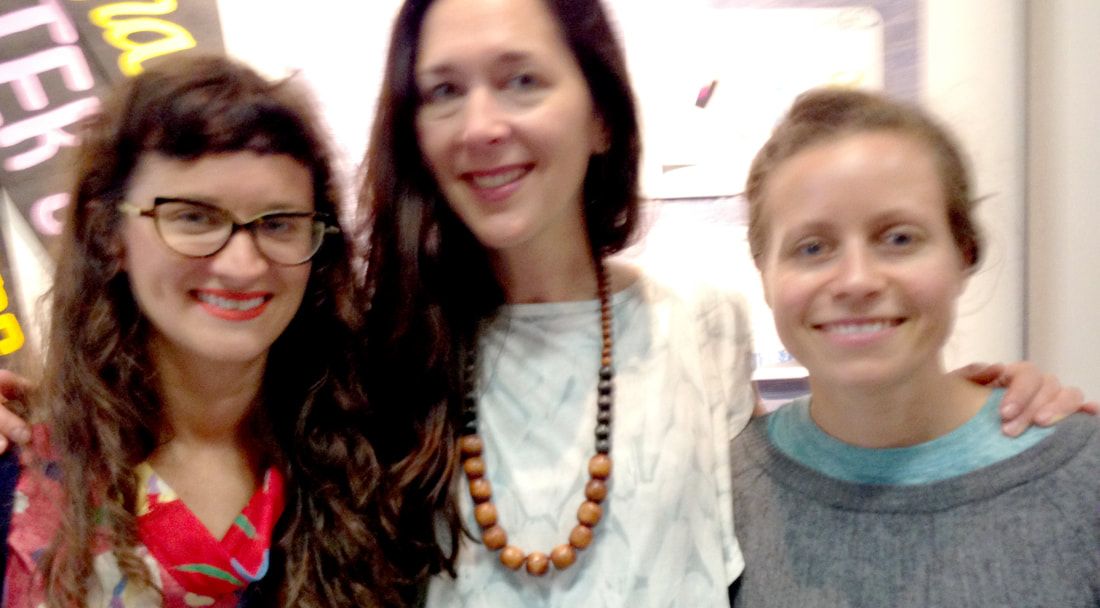

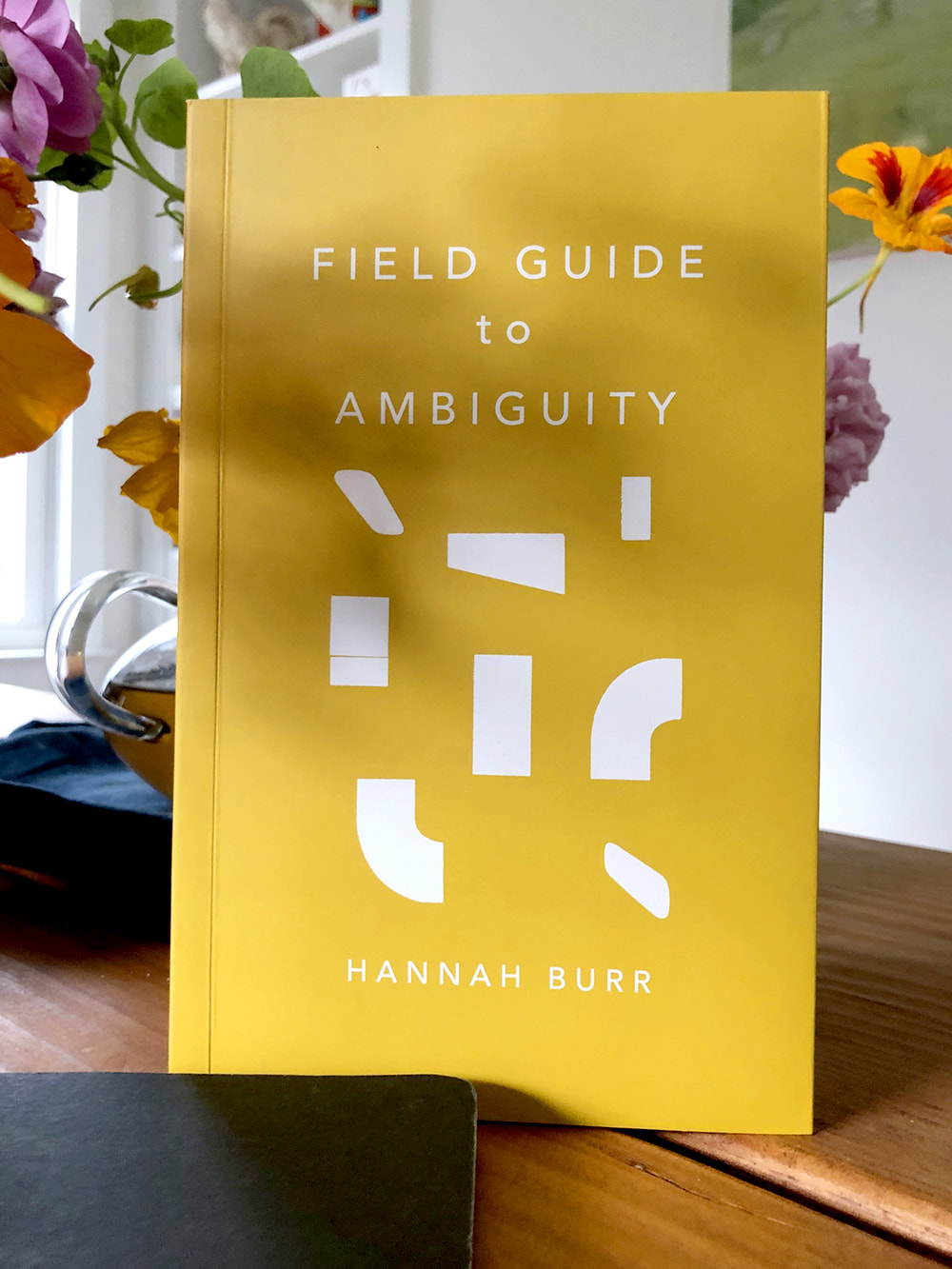


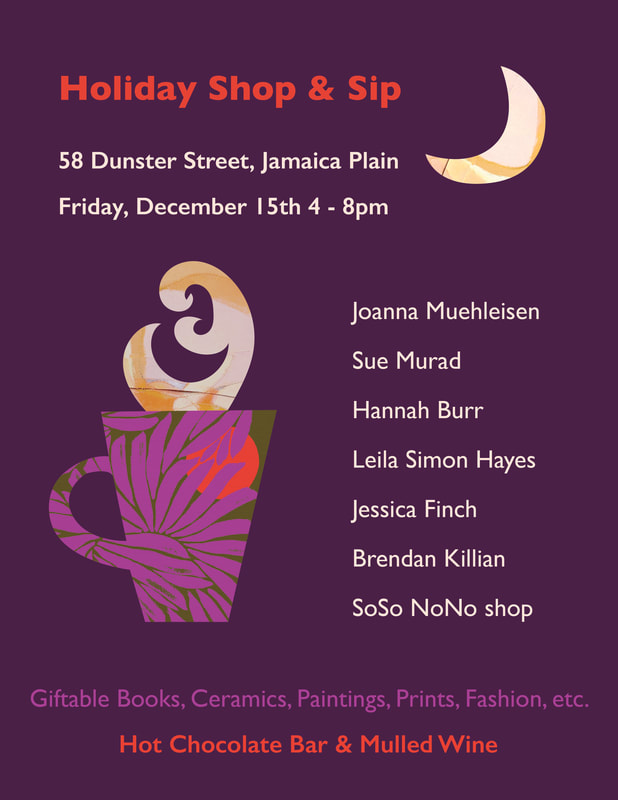
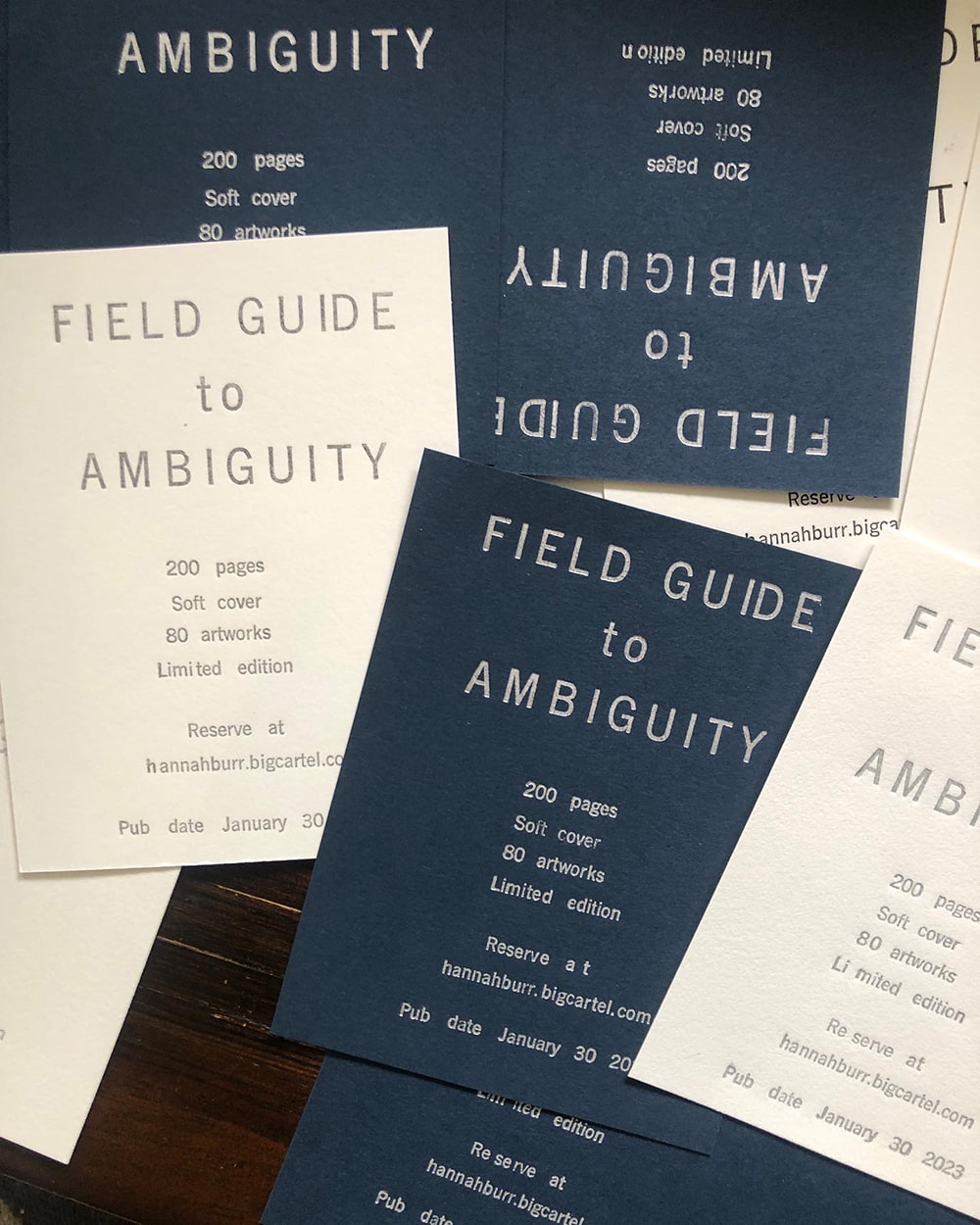







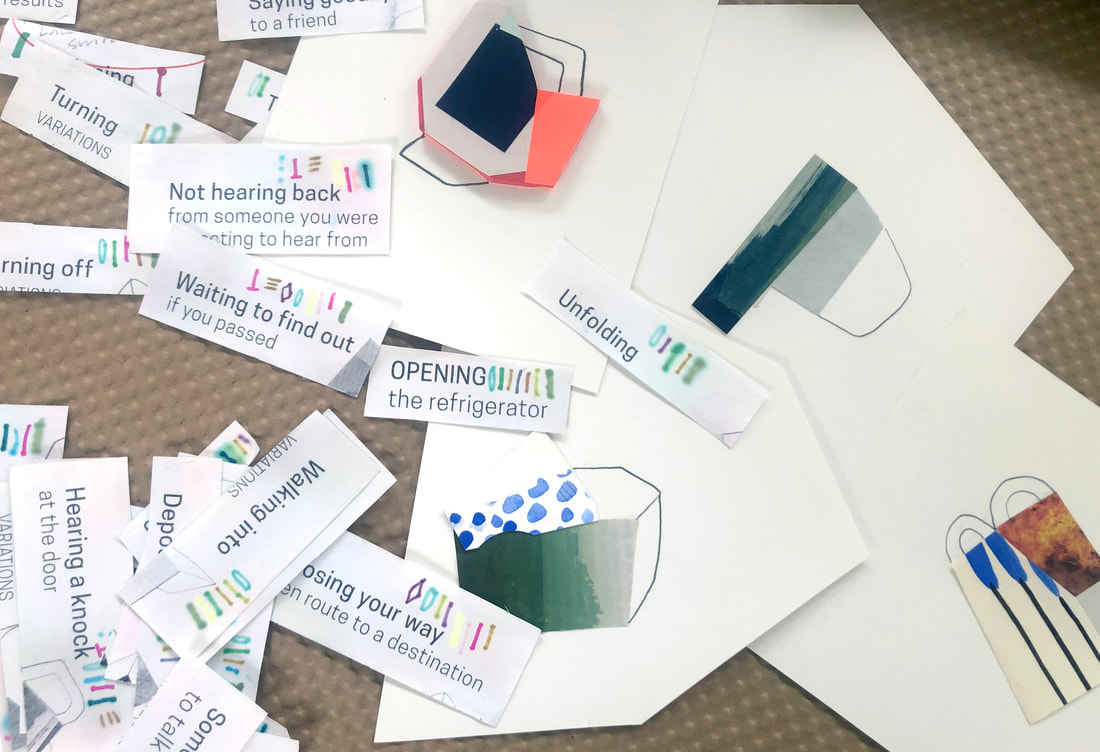




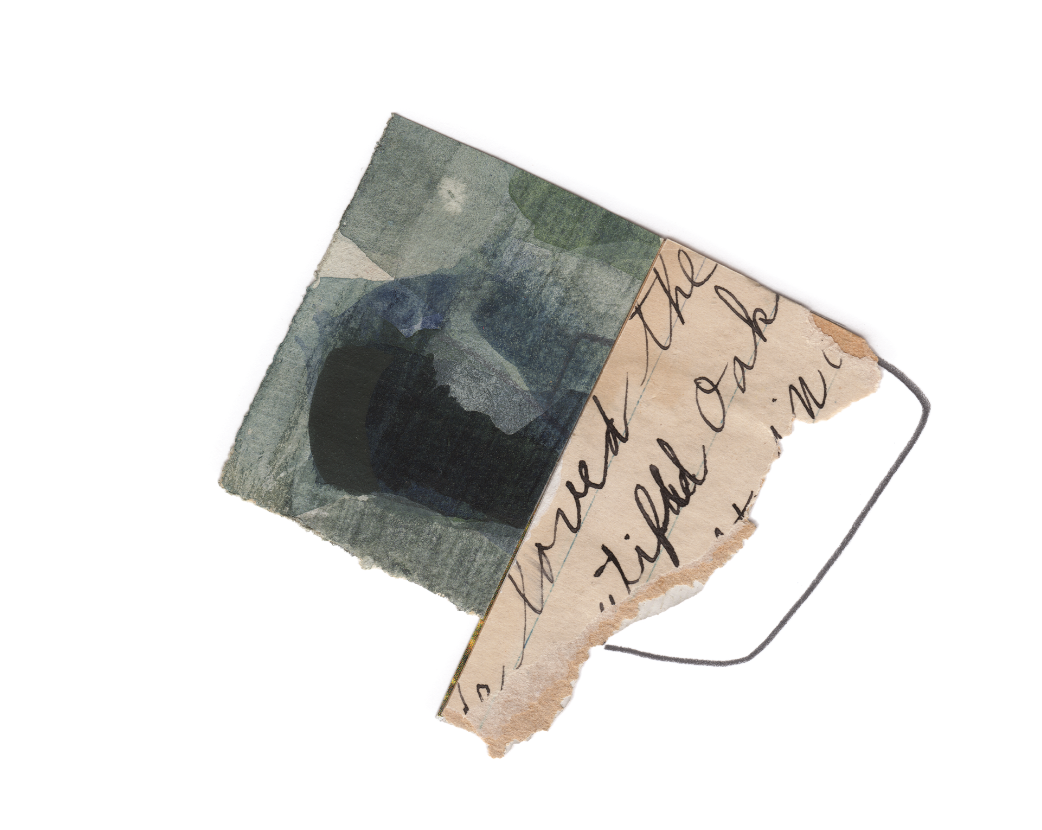

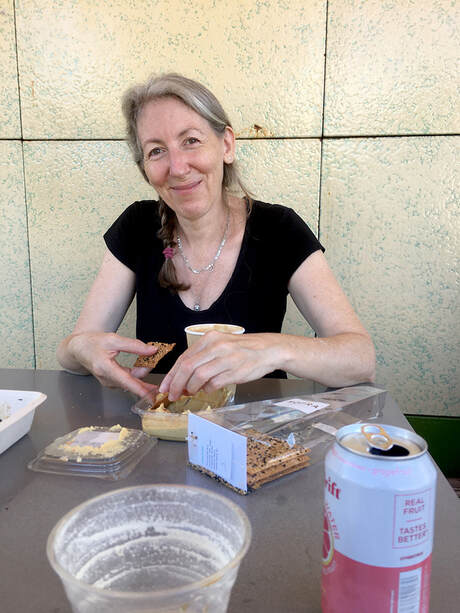














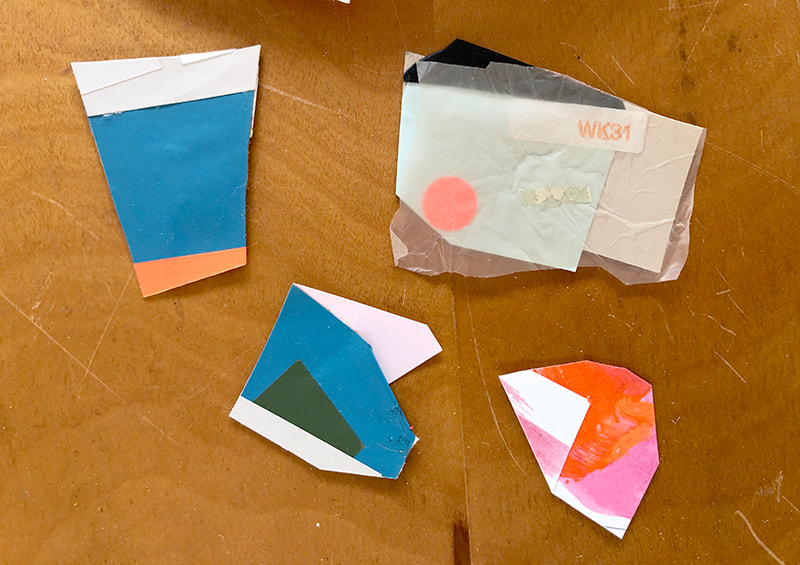



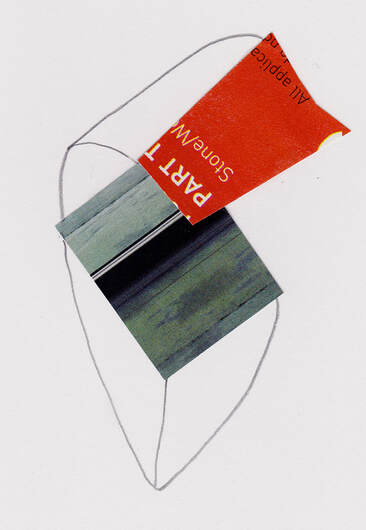

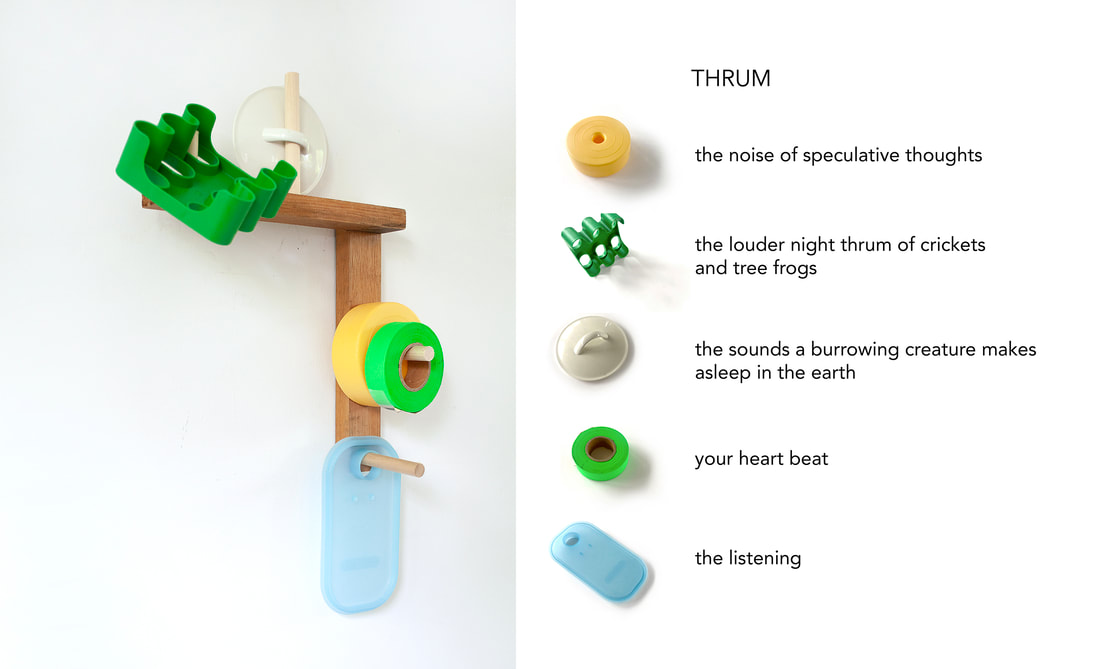

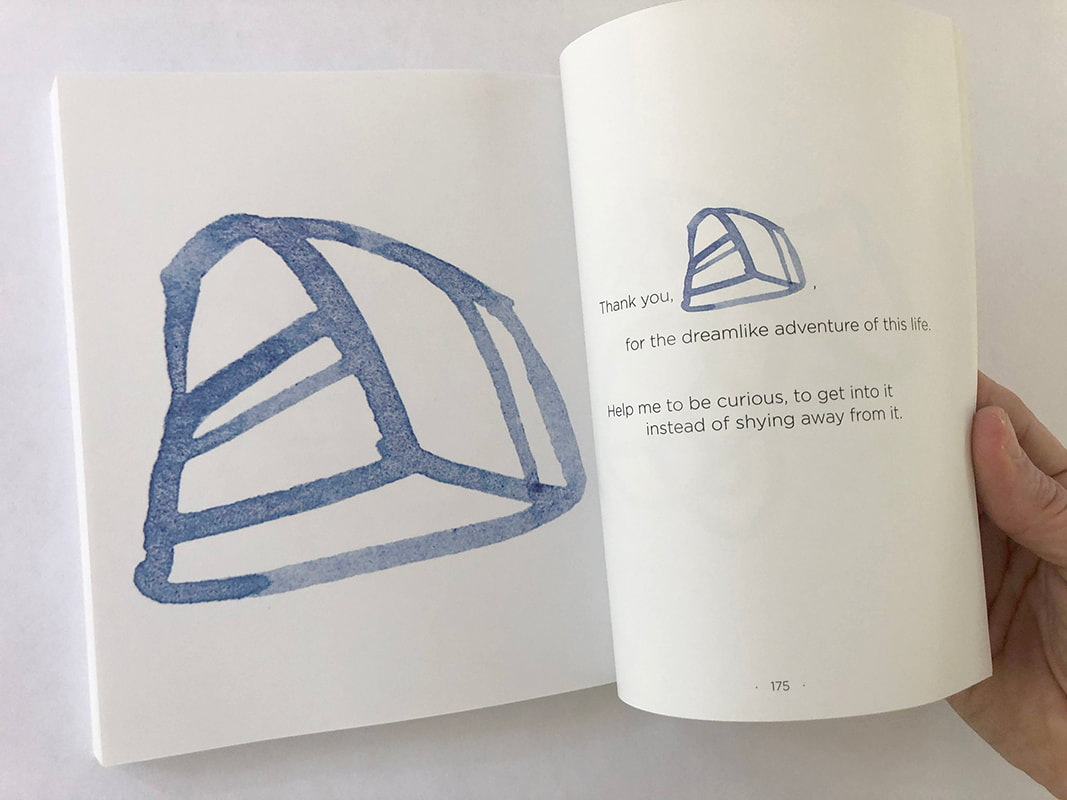
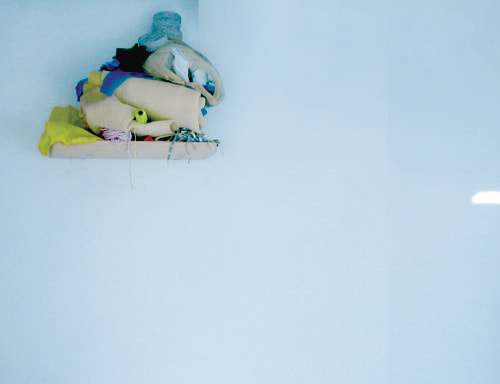

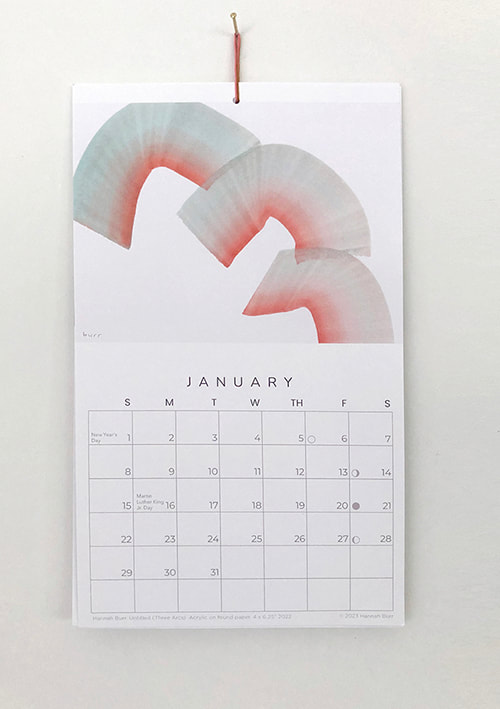




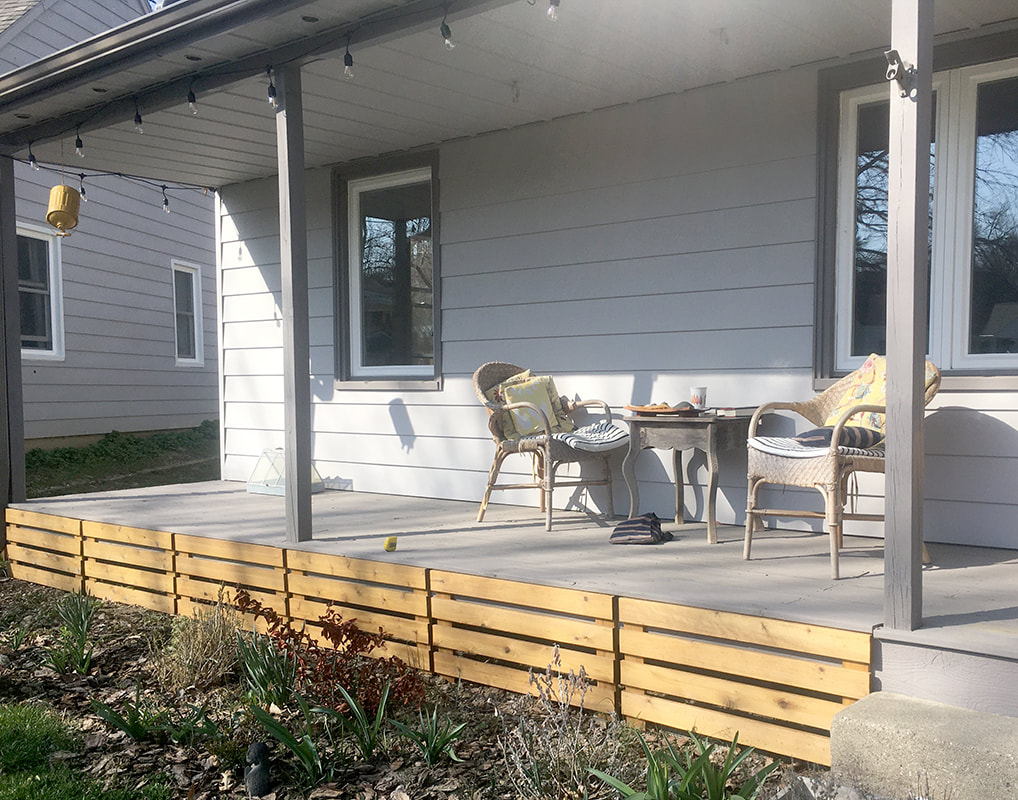





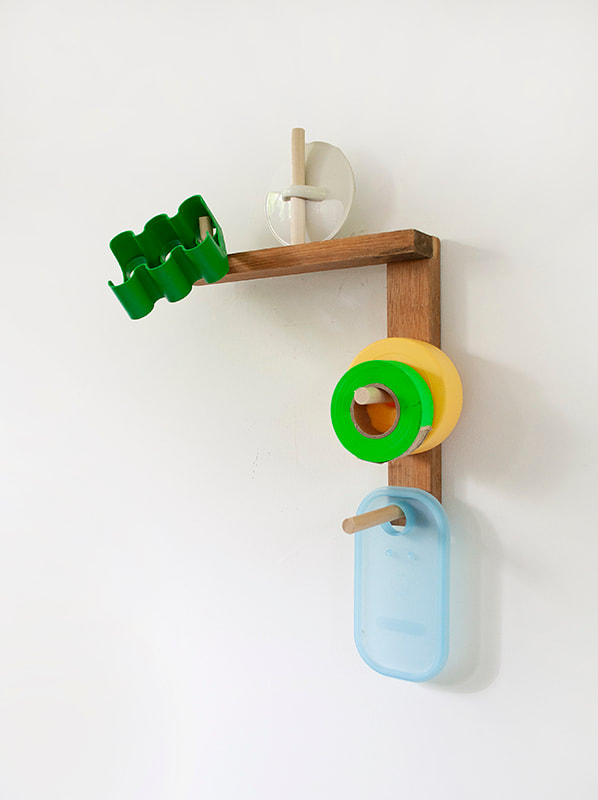


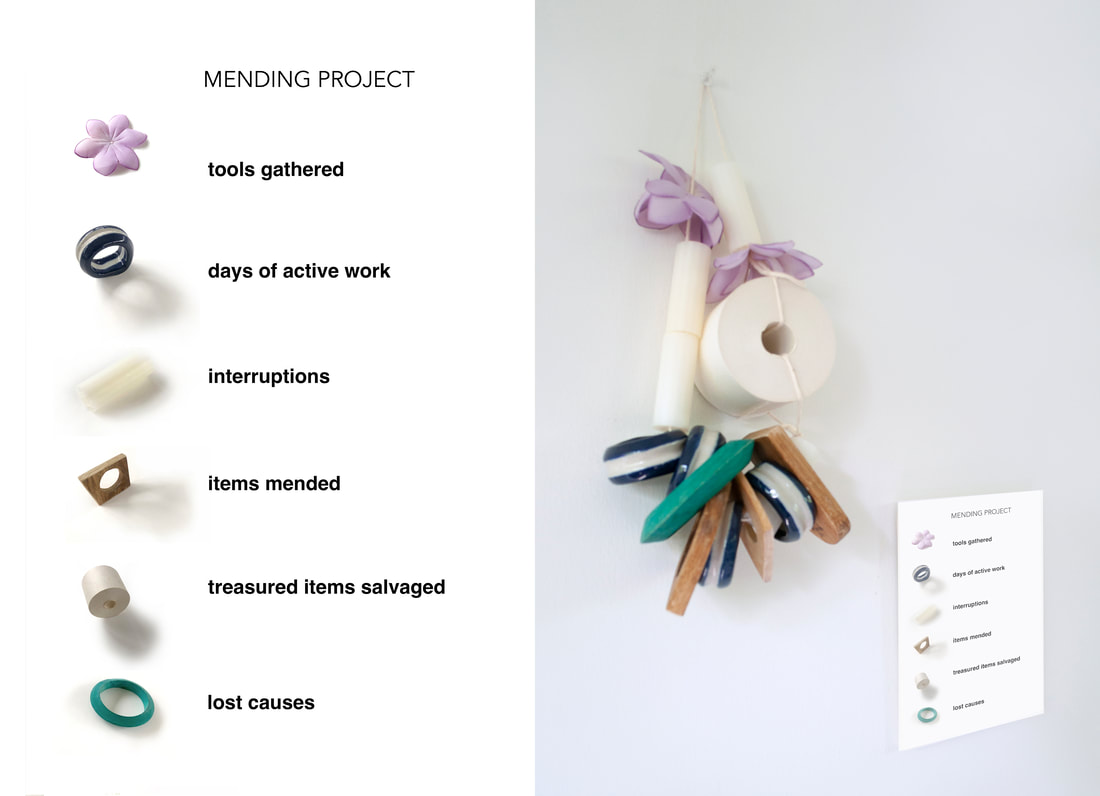
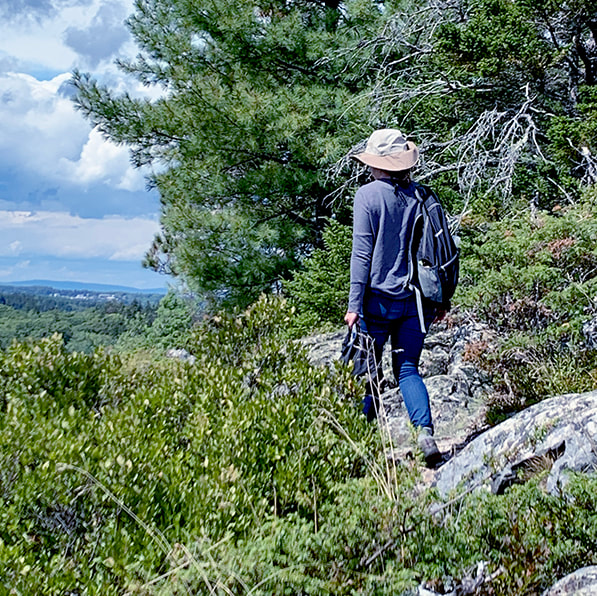

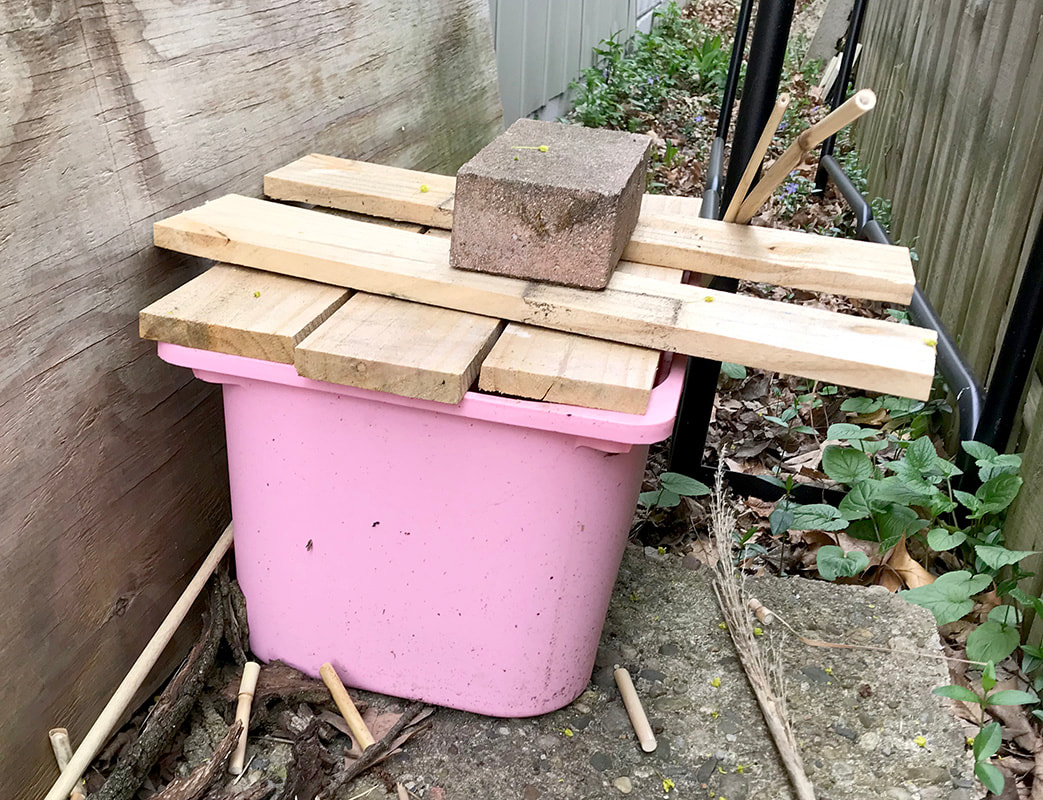














 RSS Feed
RSS Feed